Different Accompanients, dips & spreads are a great way to enhance any charcuterie board. I want to create a helpful resource that covers inspiration, classic pairings, and suggestions for many styles and types.
Key Points:
- Dips, spreads, and accompaniments elevate charcuterie boards with umami and savory flavors.
- Various charcuterie board (to help, I have a calculator for how much meat etc. per person I created) styles include Italian North, Italian South, Spanish, Catalonian, French, Mediterranean, Vegan, Dessert, Asian-inspired, Middle Eastern, Greek, American South, and Vegetarian.
- Each style features specific meats, cheeses, accompaniments, fresh produce, and spreads/dips.
- Modern accompaniments like basil pesto, olive tapenade, beetroot spread, garlic hummus, and dukkah enhance flavor profiles.
- Olive oil, balsamic vinegar, breads, crackers, and fresh seasonal vegetables add diversity and depth to the board.
Umami and savory flavors are always sought after when making a charcuterie board, so I have a few tips to bring to the next level.
The classics based on Italian, Spanish, and French cuisine will be covered. There are some colors and contrasts to really give your board the epic factor for your guests and loved ones.
Ideas and Inspiration for Different Charcuterie Board Styles
To inspire you, I’ve included dips, spreads, and other ideas from a classic viewpoint and also the modern styles that have evolved.
You will find inspiration below for these styles and suggestions:
- Italian North Charcuterie Board
- Italian South Charcuterie Board
- Spanish Charcuterie Board
- Catalonian Charcuterie Board
- French Charcuterie Board
- Mediterranean-Inspired Charcuterie Board
- Vegan Charcuterie Board
- Dessert Charcuterie Board
- Asian-Inspired Charcuterie Board
- Middle Eastern Charcuterie Board
- Greek Charcuterie Board
- American South Charcuterie Board
- Vegetarian Charcuterie Board
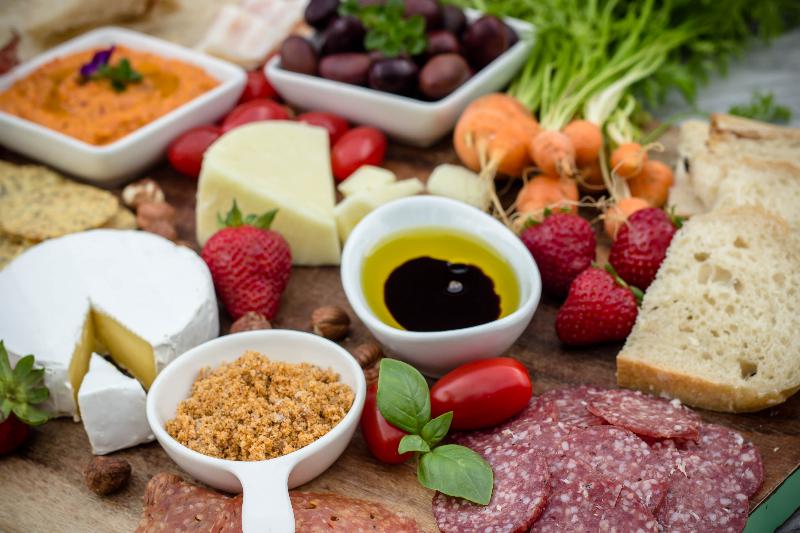
1. Italian Northern/Central Charcuterie Board

- Meats: Prosciutto de Parma, Salame Piemonte, Pancetta, Felino Salami
- Cheeses: Robiola, Castelmagno, Toma Piemontese
- Accompaniments: Focaccia, Sourdough Bread
- Charred Vegetables: Courgette, Aubergine
- Spreads/Dips: Roasted Red Pepper Spread, Basil Pesto, Tuscan Offal Based Spreads
Cleaner and simpler flavors in the North of Italy.
2. Italian South Charcuterie Board
- Meats: Salame Spianata Calabra, Ventricina, Capocollo
- Cheeses: Burrata, Cacioricotta, Canestrato
- Accompaniments: Olive Oil Crackers, Eggplant Caponata, Marinated Anchovies
- Fresh Produce: Olives, Dried Figs
- Spreads/Dips: Eggplant Dip, Spicy Calabrian Pepper Spread
Often the African influence and the spicy flavors will be more present in this style. It is incredible if you can find or make Njuda spreadable dry-cured spicy salami.
3. Spanish Charcuterie Board
- Meats: Cecina, Sobrasada, Jamon (Iberian Dry Cured Acorn Fed Ham)
- Cheeses: Roncal, Garrotxa, Murcia al Vino
- Accompaniments: Marinated Olives, Breadsticks, Almond Cakes
- Fresh Produce: Sliced Oranges
- Spreads/Dips: Olive Tapenade
Paprika and often pig blood-based sausages are very popular in Spain.
4. Catalonian Charcuterie Board
- Meats: Catalan Sausage, Perol Sausage
- Cheeses: Formatge de Cabra, Formatge de Tupí, Blau del Net
- Accompaniments: Cava (Sparkling Wine), Marinated Sardines, Olive Mix
- Fresh Produce: Sliced Peaches, Sliced Plums
- Spreads/Dips: Escalivada Spread
Many classic flavors with Barcelona being the centre point.
5. French Charcuterie Board
- Meats: Bayonne Ham, French Rosette Salami
- Cheeses: Chèvre, Morbier, Munster
- Accompaniments: Cornichons, Dijon Mustard, Baguette
- Fresh Produce: Sliced apples
- Spreads/Dips: Fig Jam, Olive Tapenade
The word has morphed to mean much more, than the classic French approach. Cured meats and offal-based meats were and are the cornerstone of classic French charcuterie, such as Pork Pate.
6. Mediterranean-Inspired Charcuterie Board
- Spreads/Dips: Red Pepper Hummus, Olive Tapenade, Fava Bean Dip
- Accompaniments: Stuffed Vine Leaves, Marinated Artichoke Hearts, Feta Cheese
- Fresh Produce: Sliced Cucumbers, Cherry Tomatoes
- Other: Pomegranate Seeds, Olive Oil for Drizzling
Color and contrasting flavors can be used to really create a visual feast.
7. Vegan Charcuterie Board
- Spreads/Dips: Avocado Hummus, Vegan Cream Cheese, Muhammara
- Accompaniments: Roasted Chickpeas, Marinated Tofu, Vegan Dark Chocolate
- Fresh Produce: Fresh Berries, Sliced Cucumbers
- Other: Nuts, Seeds
Meat doesn’t have to be the focus, even though the resource site is all about cured meat. Many contrasting flavors and umami can be created without meat.
8. Dessert Charcuterie Board
- Spreads/Dips: Raspberry Coulis, Lemon Curd, Chocolate Ganache
- Accompaniments: Meringues, Mini Eclairs, Fresh Berries
- Fresh Produce: Sliced Kiwifruit, Mango Pieces
- Other: Mini Tarts, Assorted Cookies
For more visual aspects, my advice would be to create a very small charcuterie board (here I wrote about different types of boards you can get).
9. Asian-Inspired Charcuterie Board
- Meats: Char Siu Pork, Smoked Duck, Peking Duck
- Accompaniments: Edamame Beans, Kimchi, Wasabi Peas
- Fresh Produce: Sliced Cucumbers, Daikon Radish
- Spreads/Dips: Hoisin Sauce, Sweet Chili Sauce, Soy Sauce
- Other: Rice Crackers, Sushi Rolls
Asia has massive variations, sushi and sashimi can be used as a Japanese-style platter, or a mixture of Korean, Chinese Lap Jong sausage, and Peking Duck.
This could be a true fashion style.
10. Middle Eastern Charcuterie Board
- Meats: Basturma (cured beef), Sujuk (spicy sausage)
- Cheeses: Labneh, Halloumi, Feta Cheese
- Accompaniments: Falafel, Dolma (stuffed grape leaves), Olives
- Fresh Produce: Pomegranate Seeds, Fresh Herbs (mint, parsley)
- Spreads/Dips: Hummus, Baba Ganoush, Muhammara
- Other: Pita Bread, Nuts (almonds, pistachios)
11. Greek Charcuterie Board
- Meats: Loukaniko (Greek sausage), Pastourma
- Cheeses: Feta, Kasseri, Manouri
- Accompaniments: Dolmades, Kalamata Olives, Tzatziki
- Fresh Produce: Cherry Tomatoes, Cucumbers
- Spreads/Dips: Taramasalata, Skordalia
- Other: Pita Chips, Greek Yogurt
12. American South Charcuterie Board
- Meats: Andouille Sausage, Country Ham, Jerky
- Cheeses: Pimento Cheese, Sharp Cheddar, Gouda
- Accompaniments: Pickles, Deviled Eggs
- Fresh Produce: Grapes, Apple Slices
- Spreads/Dips: Honey, Mustard, BBQ Sauce
- Other: Cornbread, Pretzels
13. Vegetarian Charcuterie Board
- Cheeses: Brie, Gouda, Goat Cheese
- Accompaniments: Marinated Vegetables, Stuffed Peppers, Nuts
- Fresh Produce: Sliced Bell Peppers, Carrot Sticks, Grapes
- Spreads/Dips: Hummus, Guacamole, Pesto
- Other: Breadsticks, Crackers
Modern Accompaniments for the Charcuterie Board in Detail
Many of the meats, as well as the spreads/dips, I make myself. Here is some more information to maybe inspire you.
- Basil Pesto (or Sundried Pesto)
- Olive Tapenade
- Beetroot Spread or Dip
- Garlicky Hummus
- Dukkah – Spice blend
- Extra Virgin Olive Oil & Balsamic Vinegar
Basil Pesto – Classic
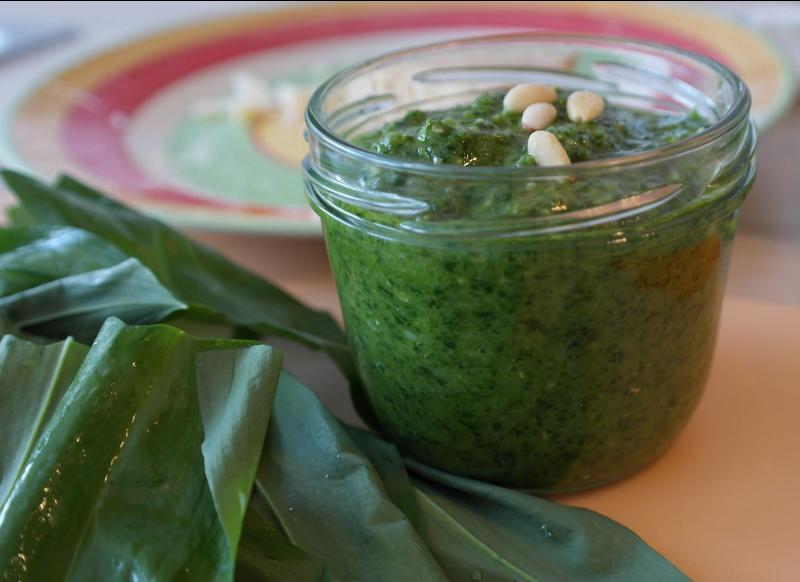
The combination of pine nuts (or other nuts), good parmesan, basil, quality extra virgin olive oil, salt, pepper & garlic is so simple but so awesome.
I remember watching a cooking show (Jamie Oliver in Italy, I think) and seeing Grandma (Nonna) crushing and mixing the pesto in a mortar and pestle. She swore by this manual technique rather than using the easier blender or hand Wizzer options.
I tried it with Mortar & Pestle recently, it felt more authentic for sure.
The alternative, sun-dried tomato pesto, can also be a great splurge of color. The intensified flavor of dried tomatoes brings a summery sweet flavor.
I love this recipe, which is the way the classic Italian Nonna makes it, from the blog 101cookbooks.com
Olive Tapenade
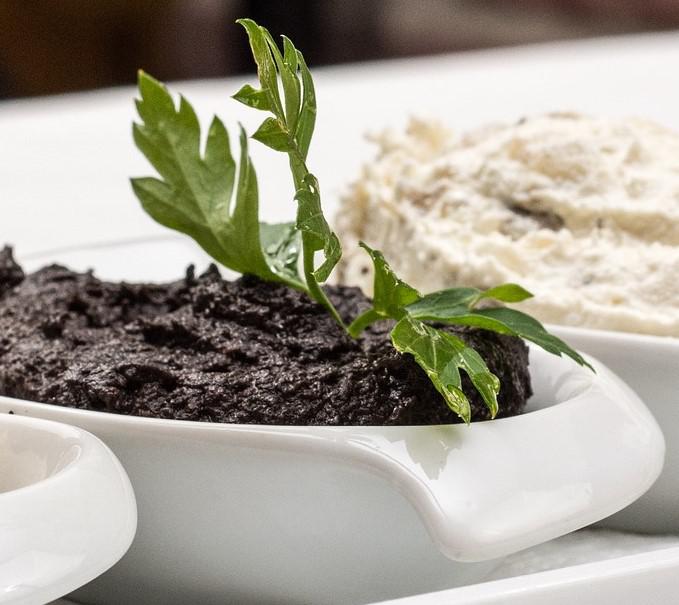
So mighty and so pungent, it’s an art to get the balance of black olives and umami-salted anchovies just right. As with any cooking, you just keep tasting until it hits the sweet spot. It’s an acquired taste, but readily available in most stores these days.
I definitely prefer fresh bread, like sourdough, with my tapenade on the charcuterie board. Crackers don’t have the level of absorption that you can get from a well-soaked piece of fresh bread.
This rustic tapenade recipe from the blog An Italian in My Kitchen is simple and delicious.
Secret Ingredient – Savory Flakes
If you haven’t tried it before, I am an addict when it comes to sprinkling it on buttered bread, it’s very moreish (makes you want to eat more of it!).
This is actually a byproduct of making beer I am told, but it’s also a massive savory hit when added to a dip or even broths and soups. Use it to enhance to the next level.
Beetroot Spread or Dip
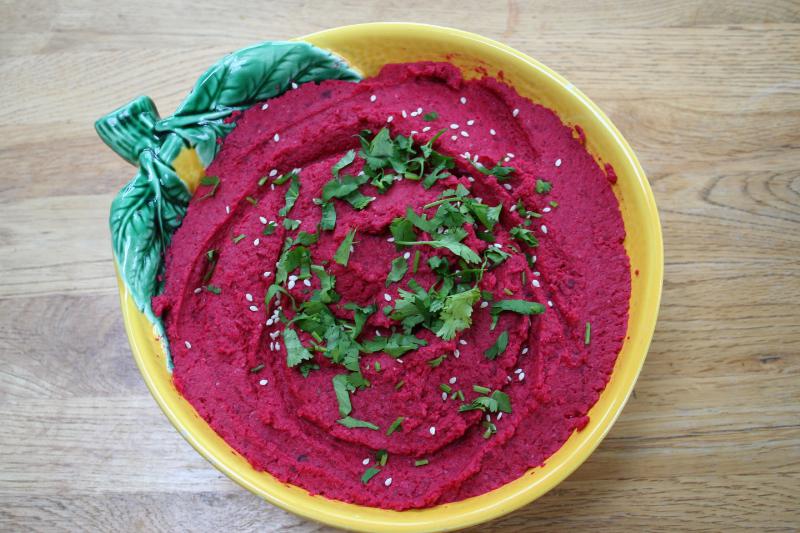
Purple is one of my favorite colors; this deep, dark addition does wonders to the visuals on a charcuterie board.
Most of the beetroot recipes will tick the healthy box. also, if you make it at home, you can play around with the spices. A bit of cinnamon, coriander, and toasted pistachios go a long way.
Garlicky and extra smear-able!
This yogurt-based recipe from delicious every day is a winner!
Garlic Hummus
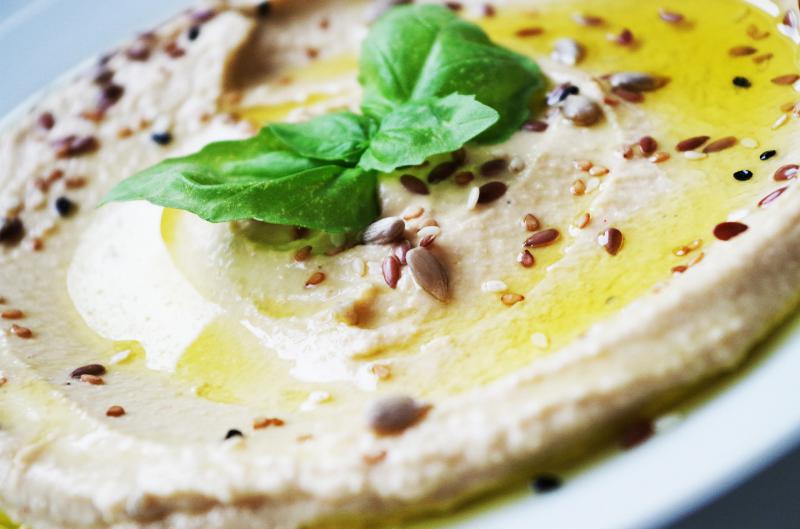
Talking about garlicky is another all-time favorite that is also easy to make.
There used to be a standout Hummus restaurant in London that I loved to go to when visiting. It served super simple variations of hummus, always piping it on pita bread. It’s a shame it closed some time ago.
Anyway, hummus can be the stand-out performer on your charcuterie board too, and you can really play around with the ingredients.
Tahini, garlic, chickpeas, salt, pepper, lemon/lime, and extra virgin olive oil.
Blend it up and that’s about it, for many years I omitted tahini (sesame seed paste) – it gives that nutty edge but isn’t essential I don’t think.
This hummus recipe is a complete breakdown, and it gives that secret tip: the order you add in the ingredients! Check it out here at Inspired Taste.
Dukkah – Spice Blend
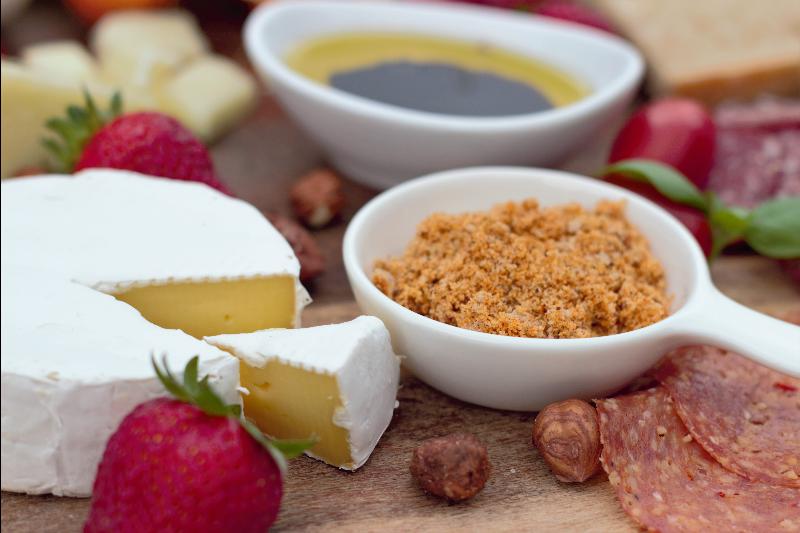
Having a spice grinder can help make this a quick, effortless creation.
I love playing around with spices when cooking with many types of foods, be it curry or a dry-cured piece of Braesola.
Nuts, cumin & coriander seeds form the base for many of my dukkah creations, and from there, you can play around with heaps of spice combinations (Tip Smoked Paprika can elevate and create a whole new level)
All you need is quality creamy extra virgin olive oil for pre-dunking so that dukkah can be nicely coated across your soft fresh bread.
Sometimes, I use olive oil or balsamic vinegar to add another layer of flavor to the dukkah dunking ritual.
Toasted spices can bring out more aromatics and deeper flavors I find.
Here is an easy step-by-step dukkah, one herb I’m not a big fan of it fennel, so I omit it, check it out here at hurry the food up.
Olive Oil & Balsamic
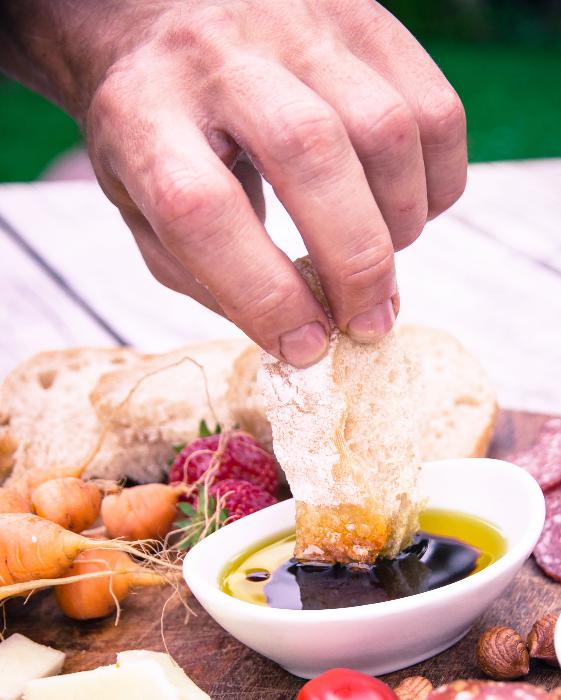
Yes, it is so simple, but also you get some much variation in quality olive oil and balsamic vinegar, you can really play around with it to produce something interesting.
Try to go for the creamy style of olive oil, I have accidentally bought robust/hot styles which can lead to lingering of bitterness in the mouth.
Breads & Crackers
Crackers are cool, I love them with soft cheeses. For dips and spreads, I generally like the soft fresh bread. This of course is just a personal preference, don’t let me hold you back on those crackers!
For dunking soaking with olive oil/balsamic, and the dukkah – you get a bit more diversity with bread vs crackers.
Fresh Organic Local Seasonal Vegetables
When the season is right, homegrown or quality organic vegetables are a great way to showcase the true taste of vegetables.
Supposedly the sugar content
As soon as vegetables are harvested, they also begin to lose moisture. … Their cut stems also provide a perfect escape route for moisture, so vegetables wilt even faster once sliced. When plant tissues lose water, their nutrients, sugars, and plant acids become more concentrated in the remaining cell sap.
Science of Cooking website

Tom Mueller
For decades, immersed in studying, working, learning, and teaching the craft of meat curing, sharing the passion and showcasing the world of charcuterie and smoked meat. Read More



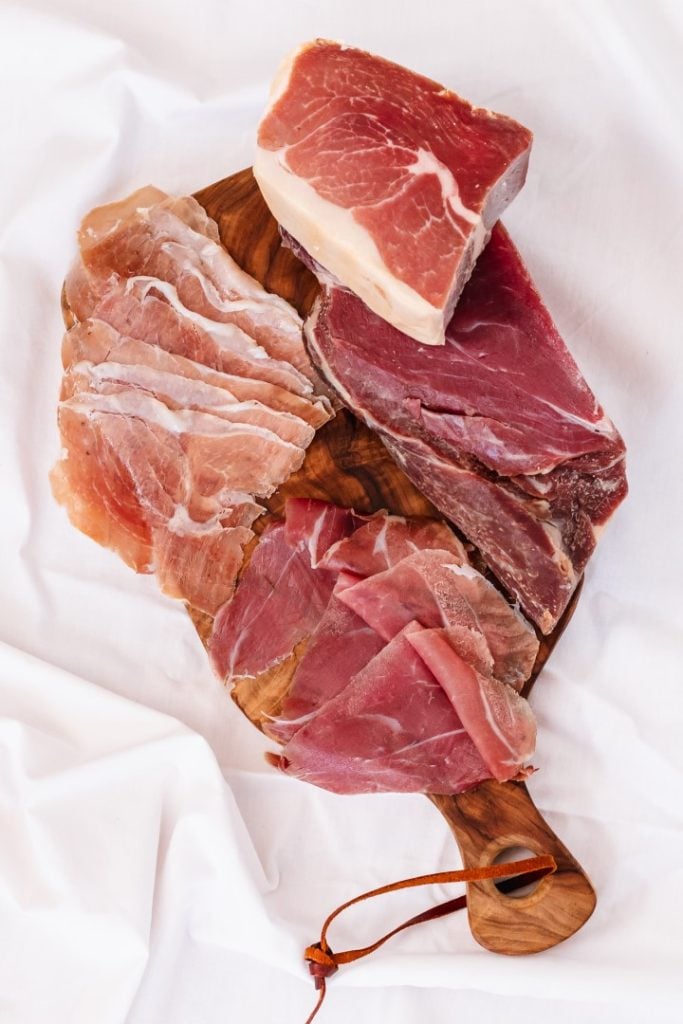
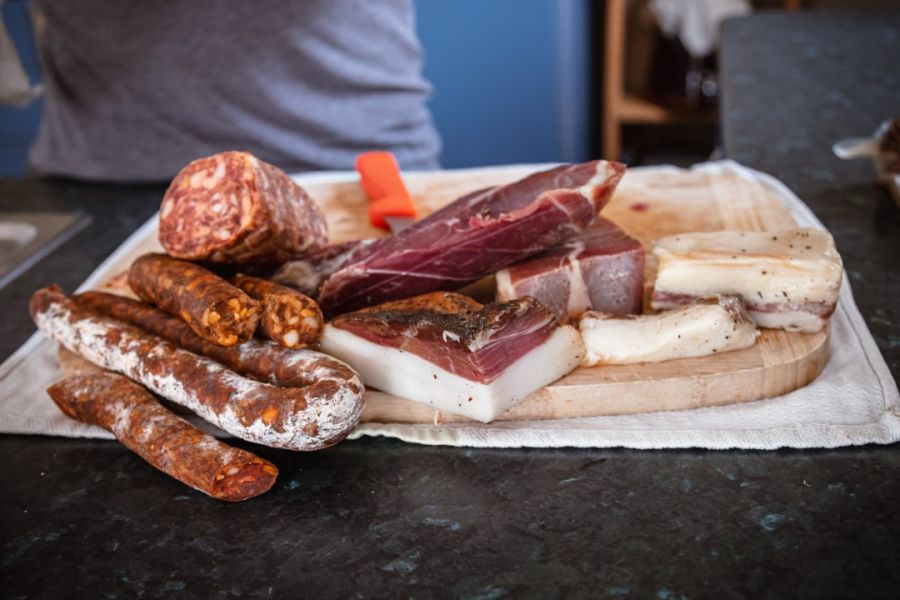
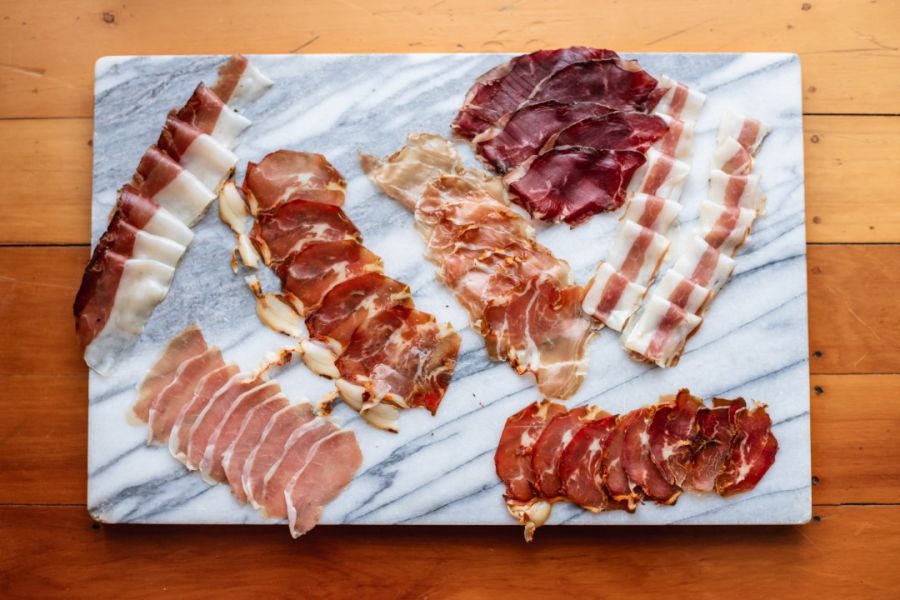
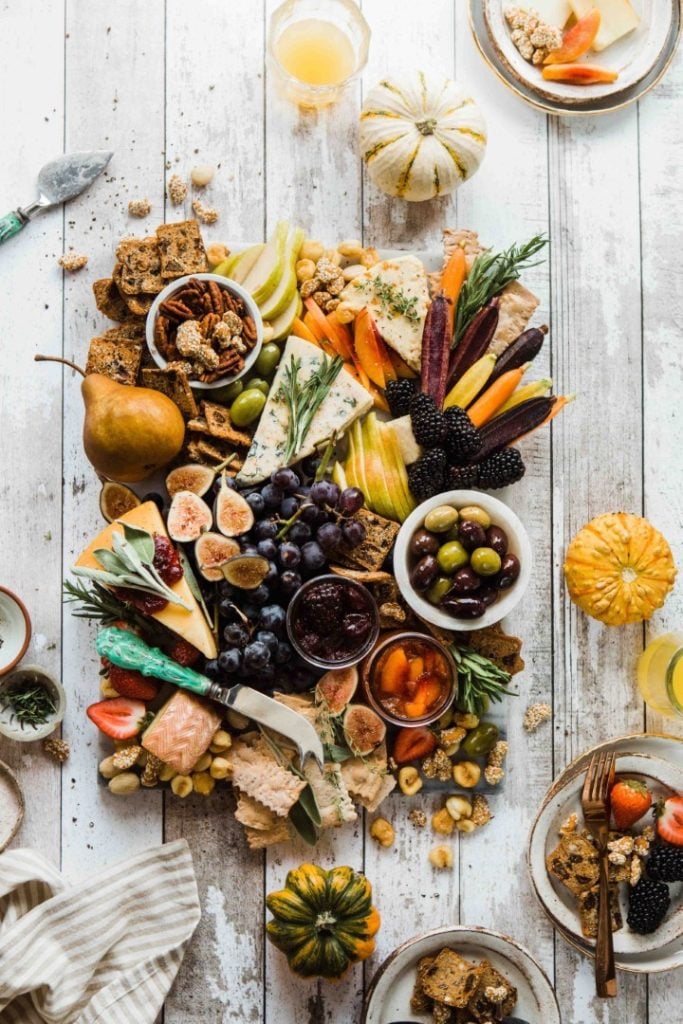


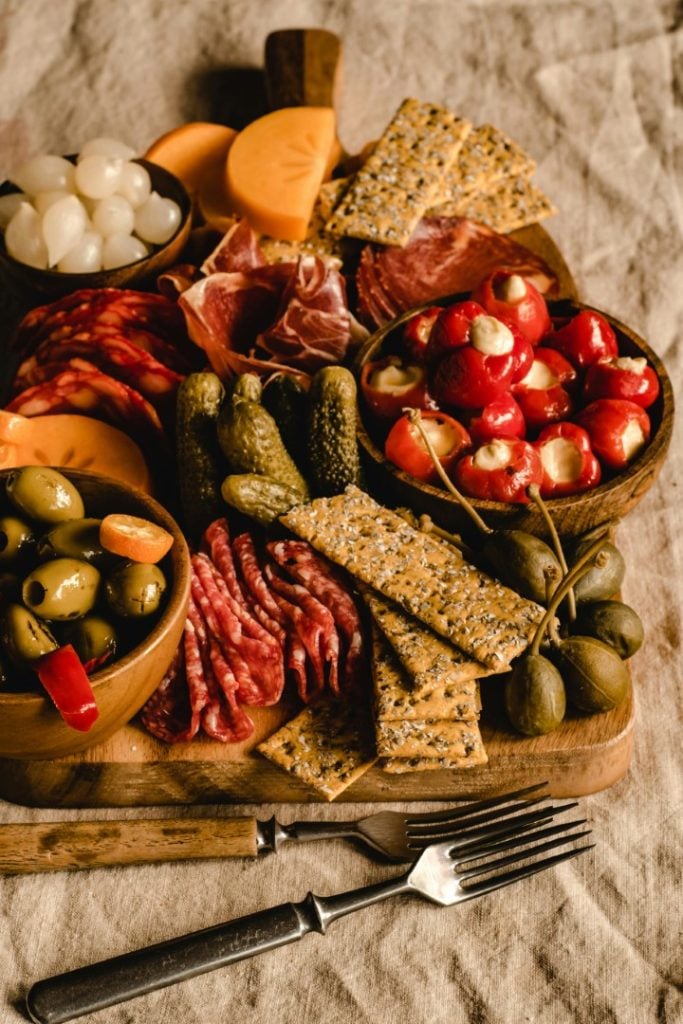


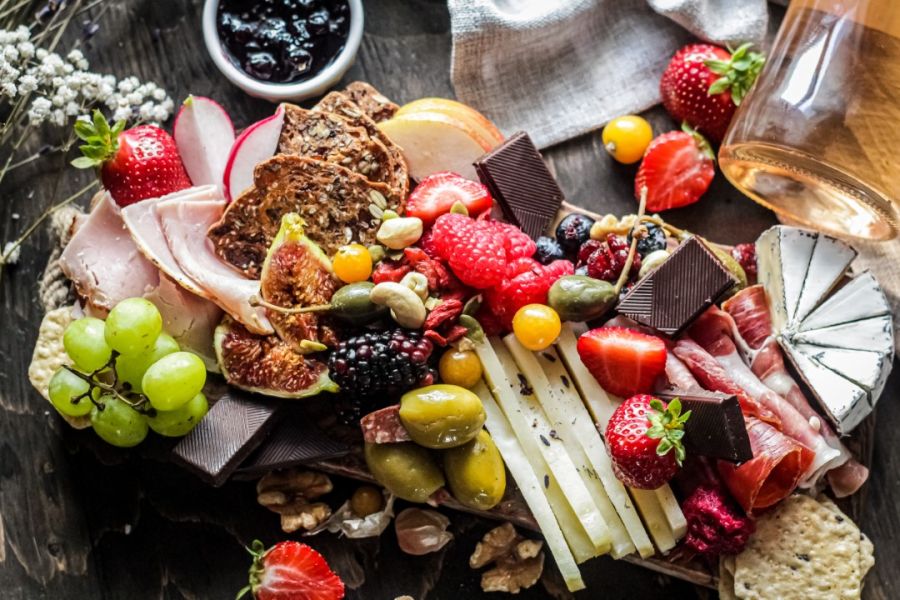
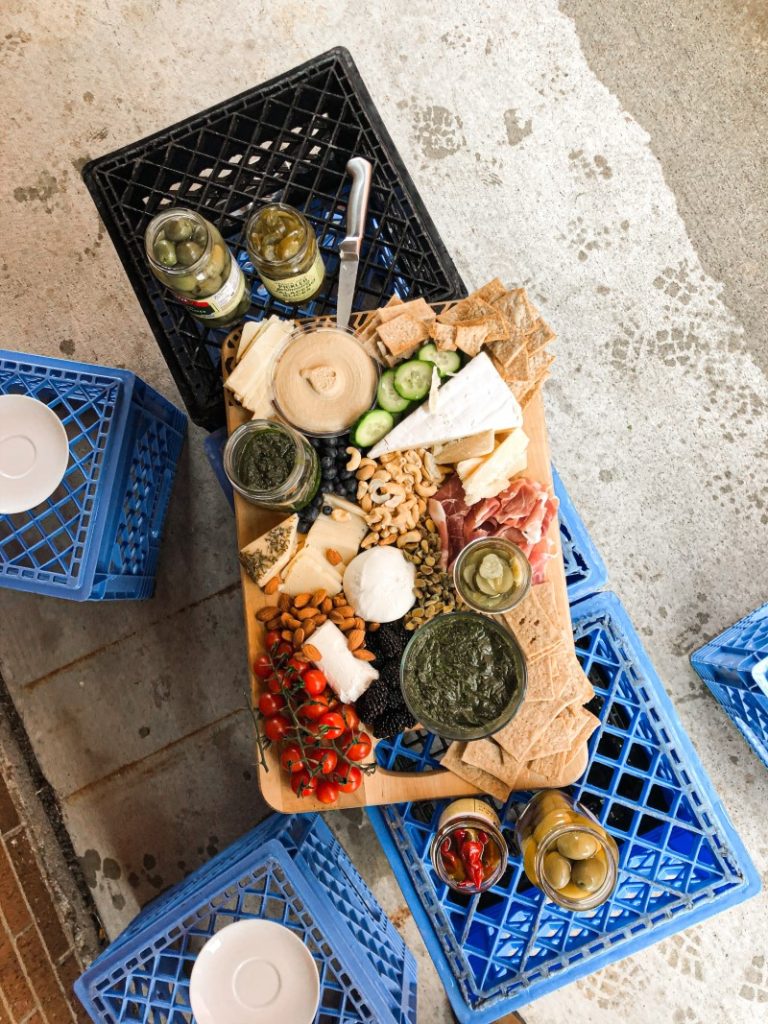


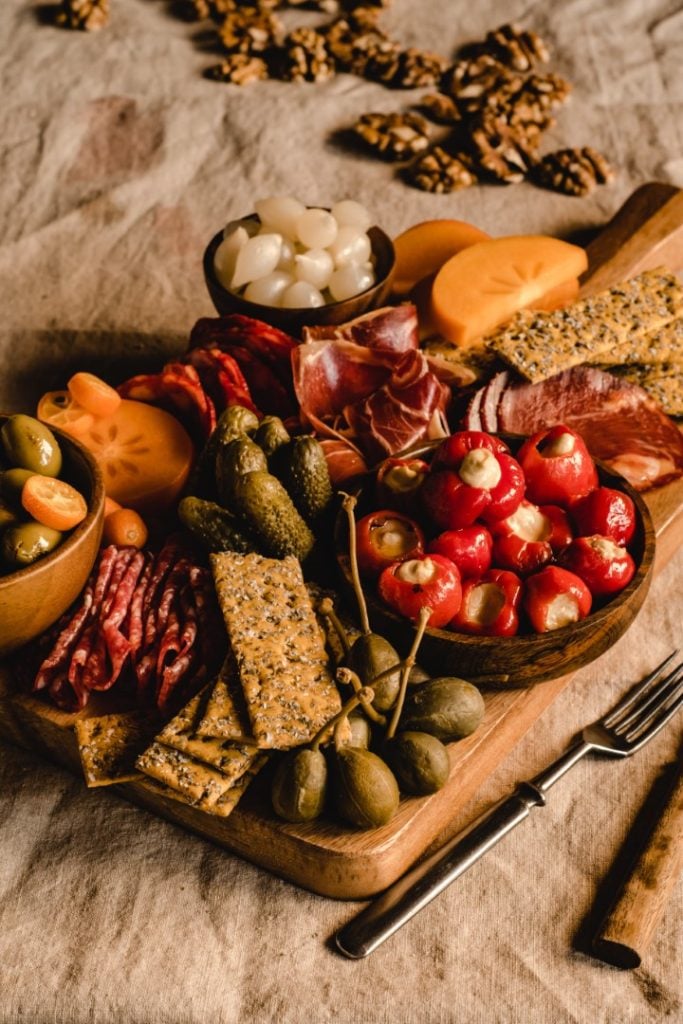
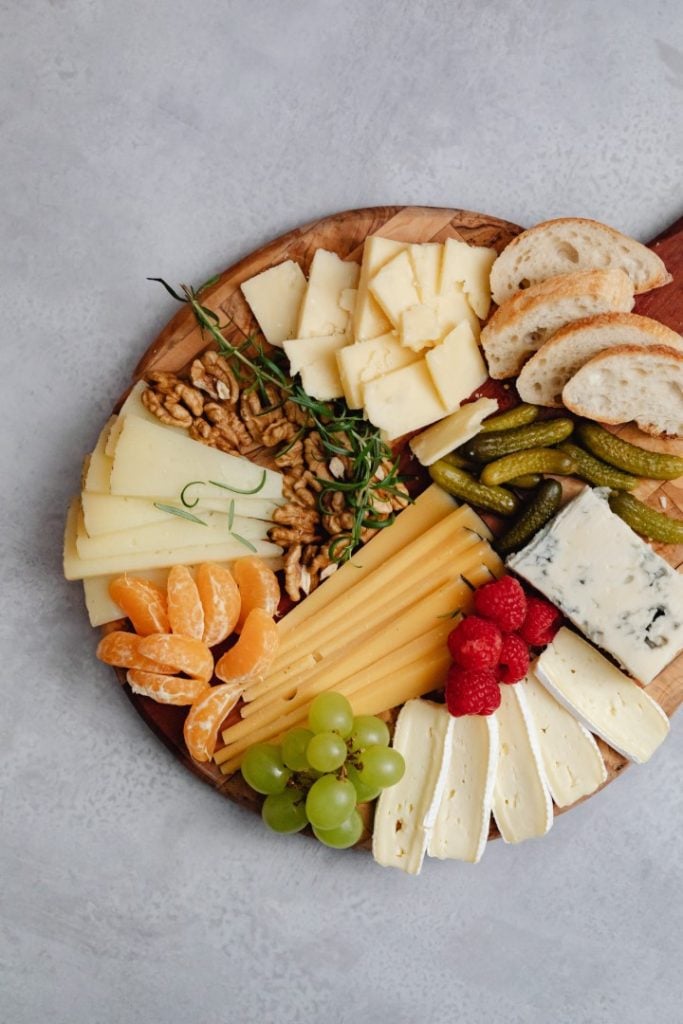
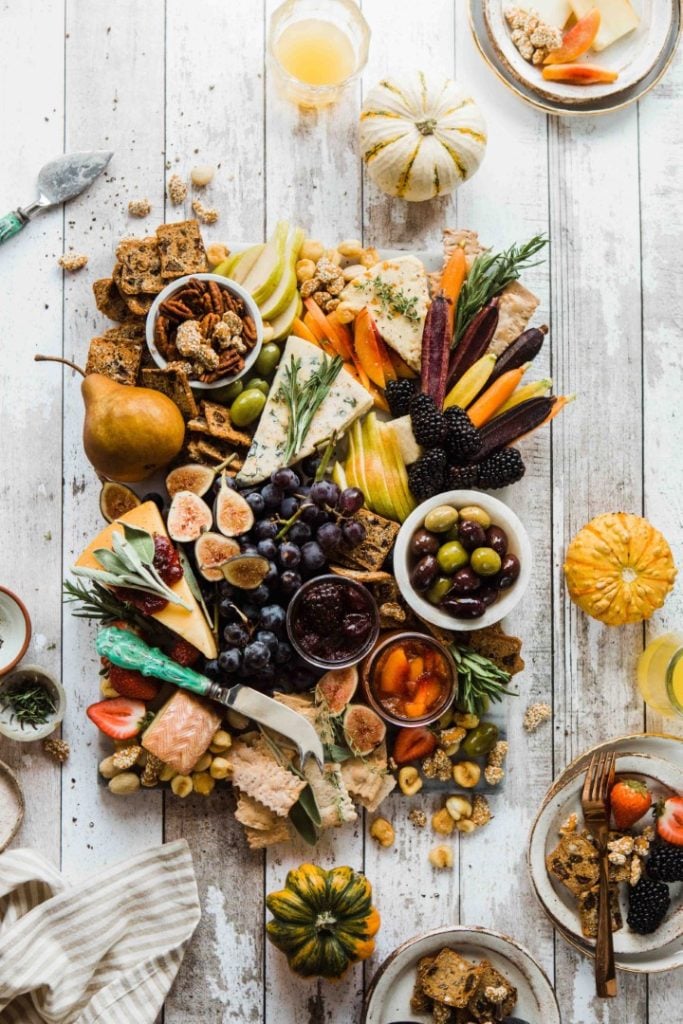

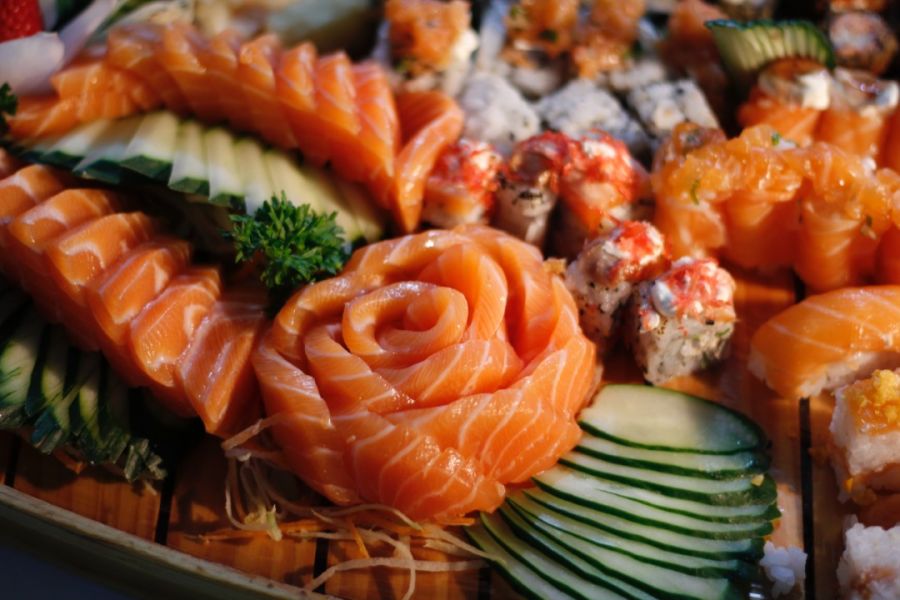


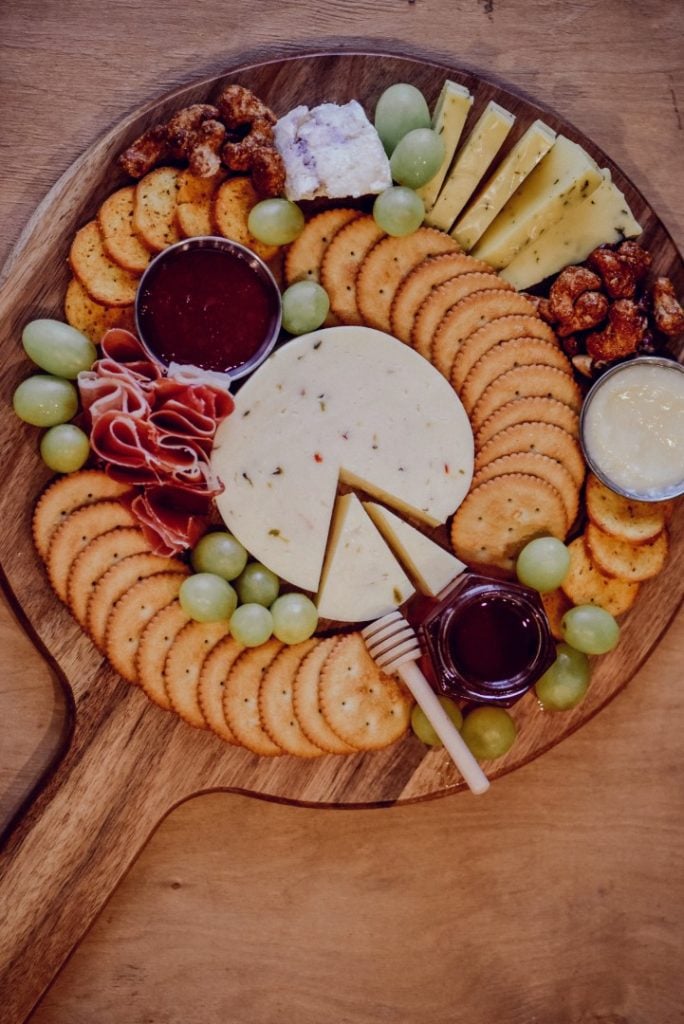
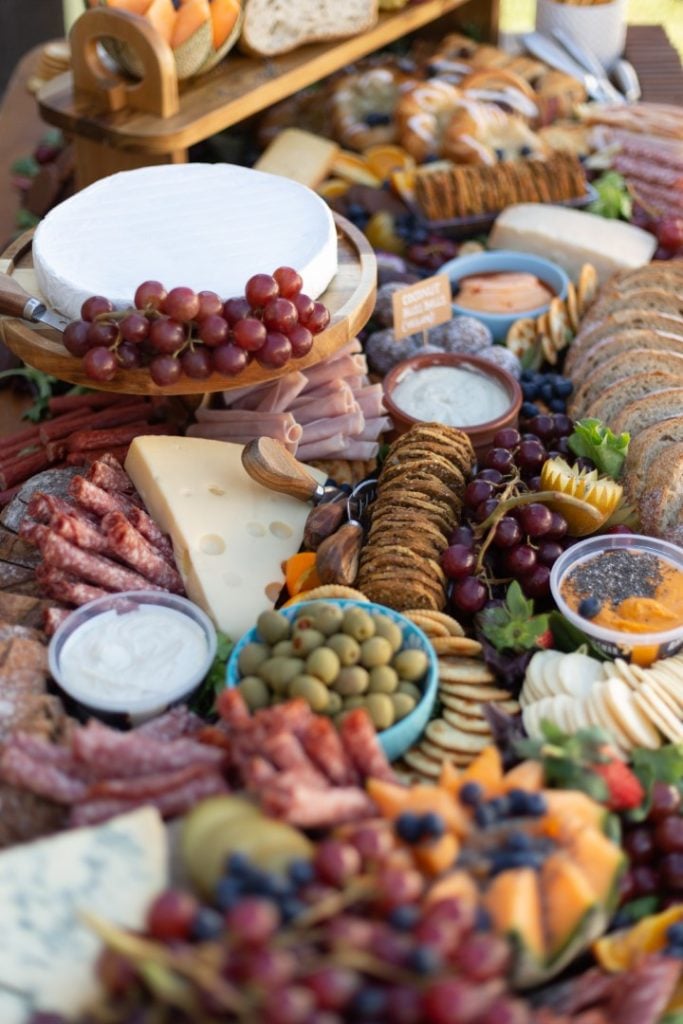

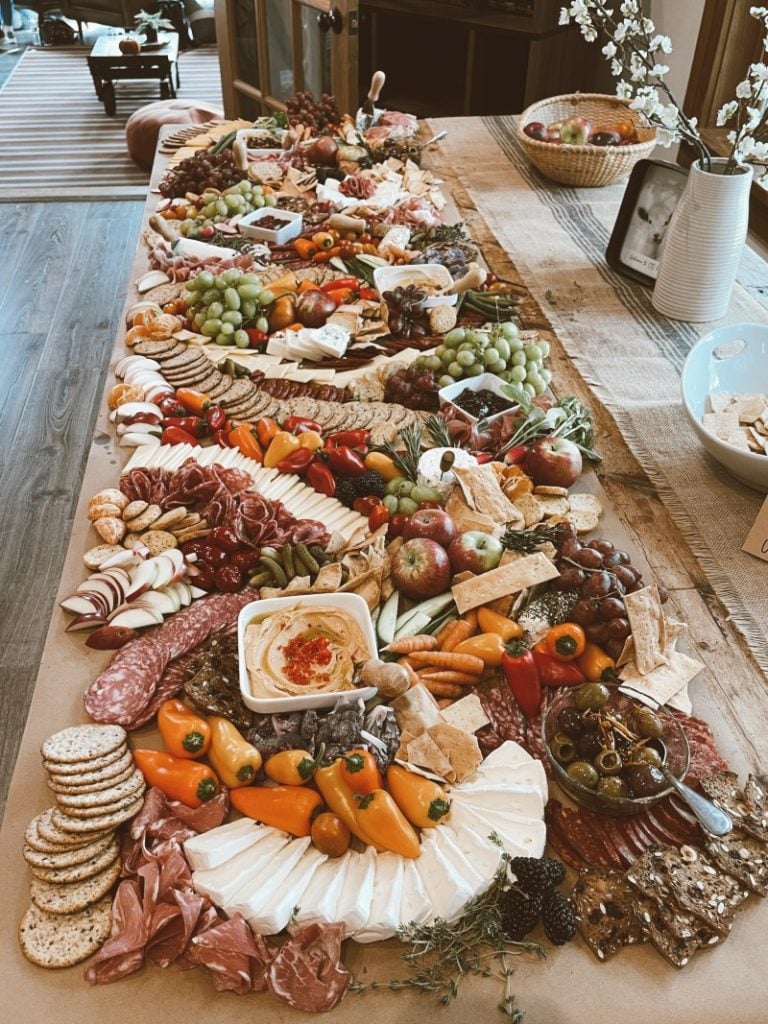
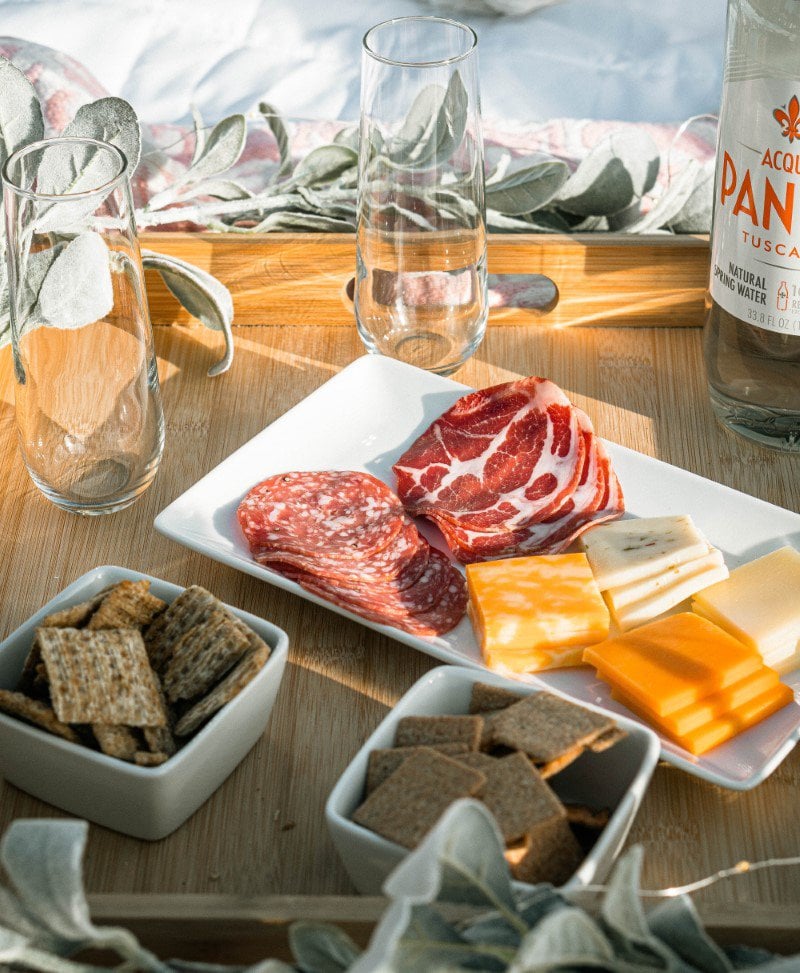

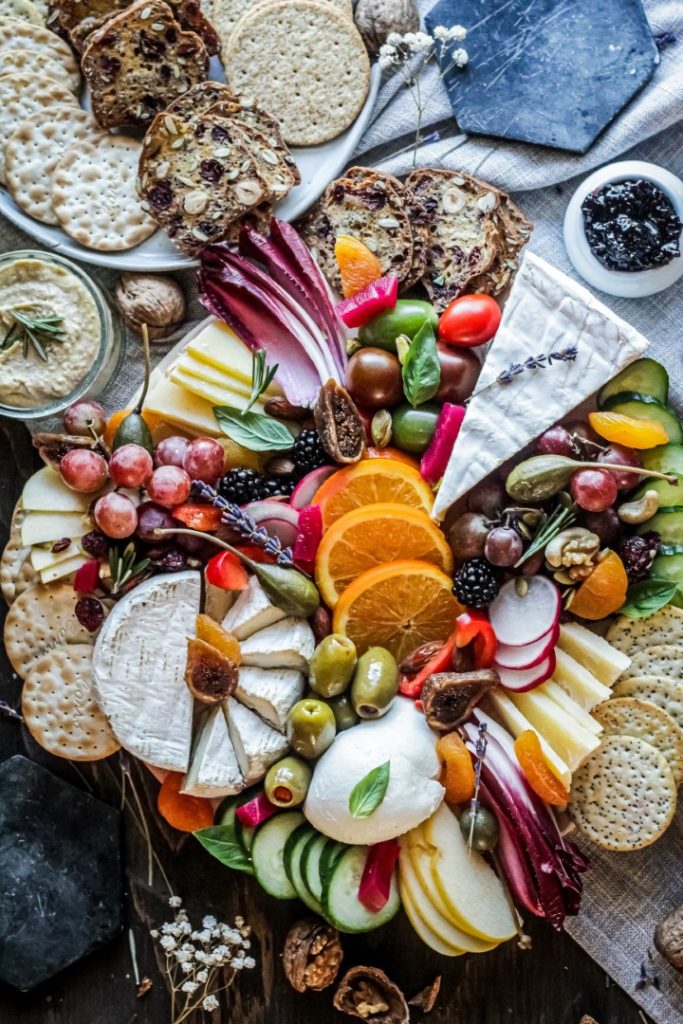



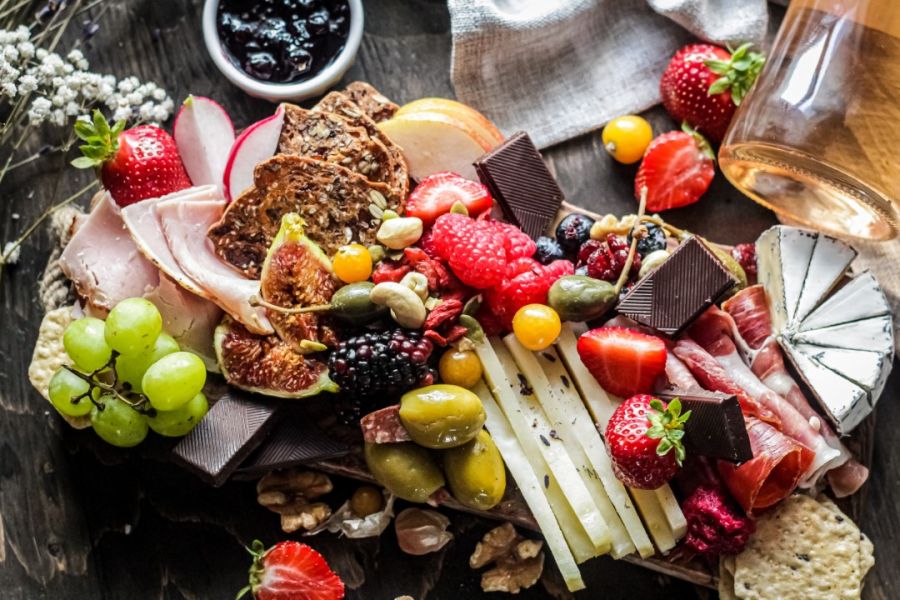
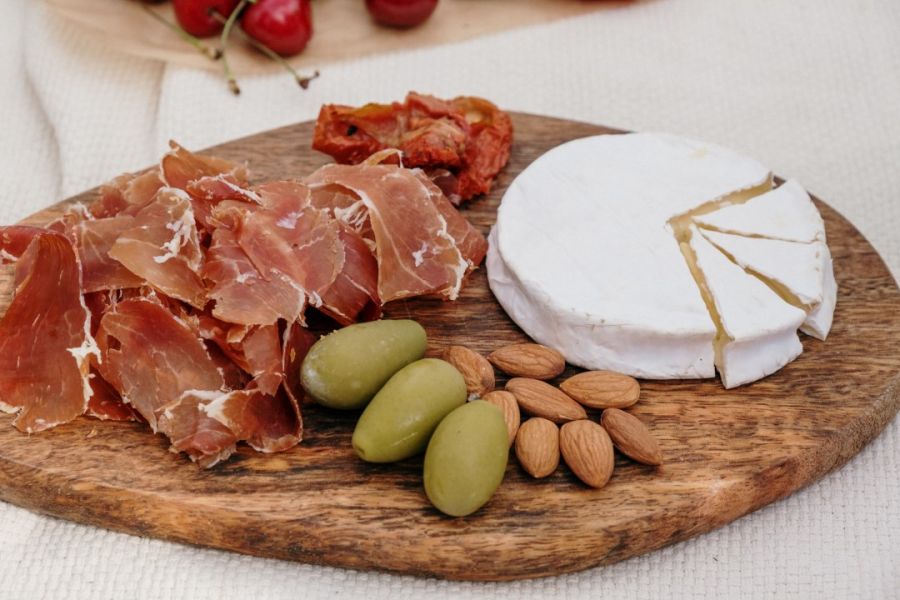
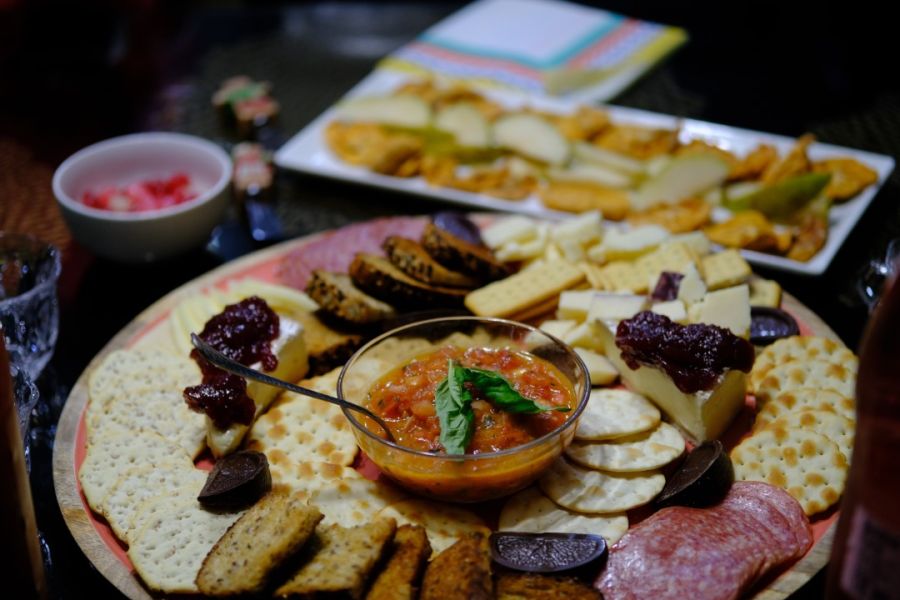

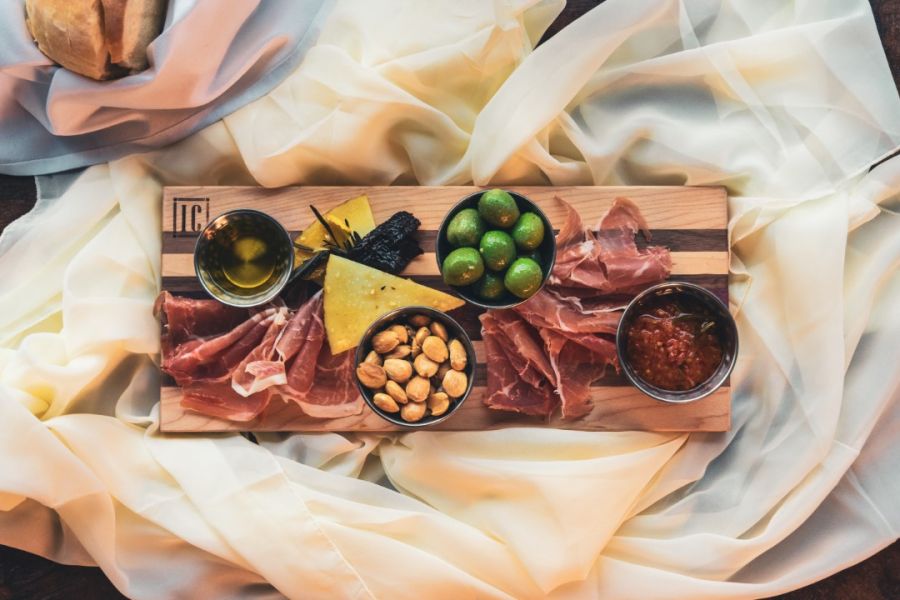
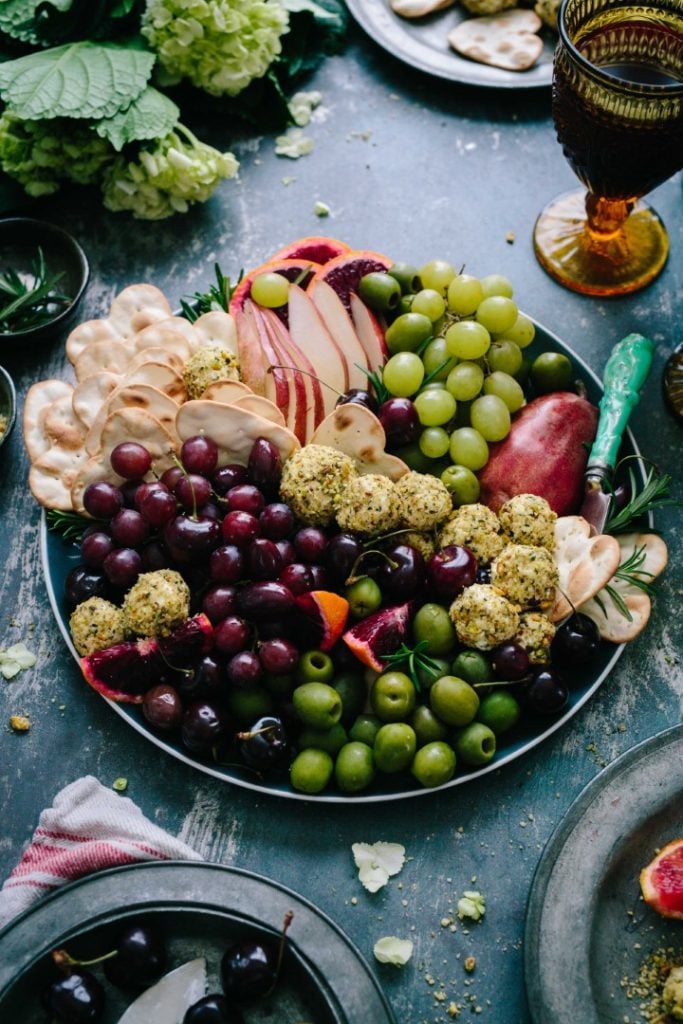

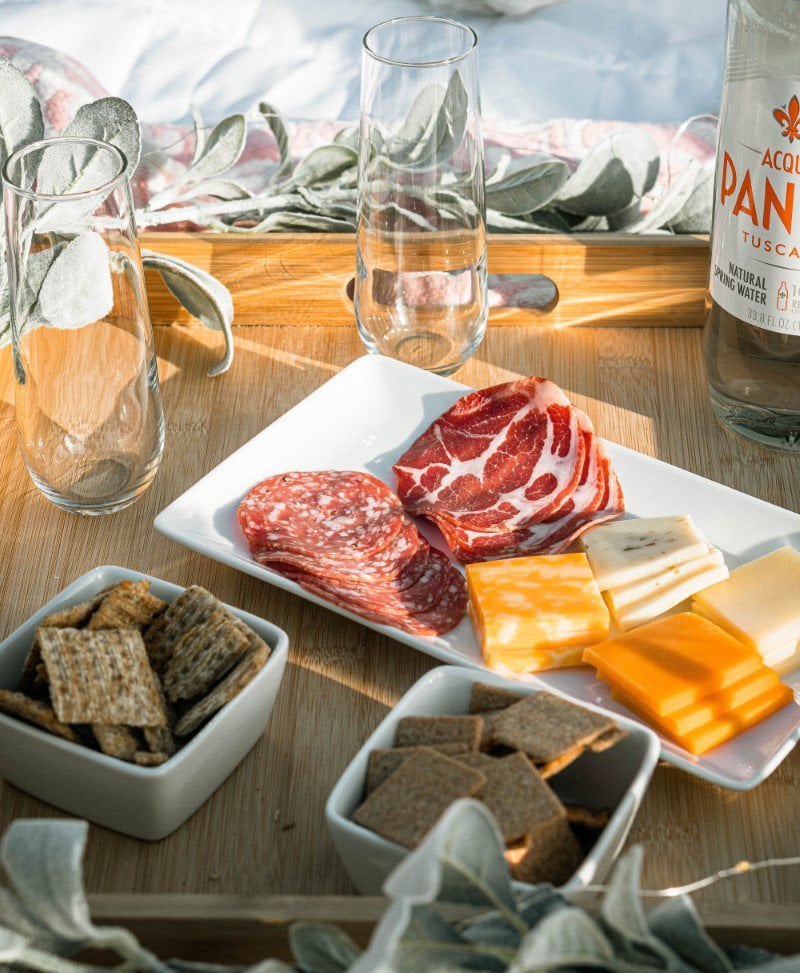
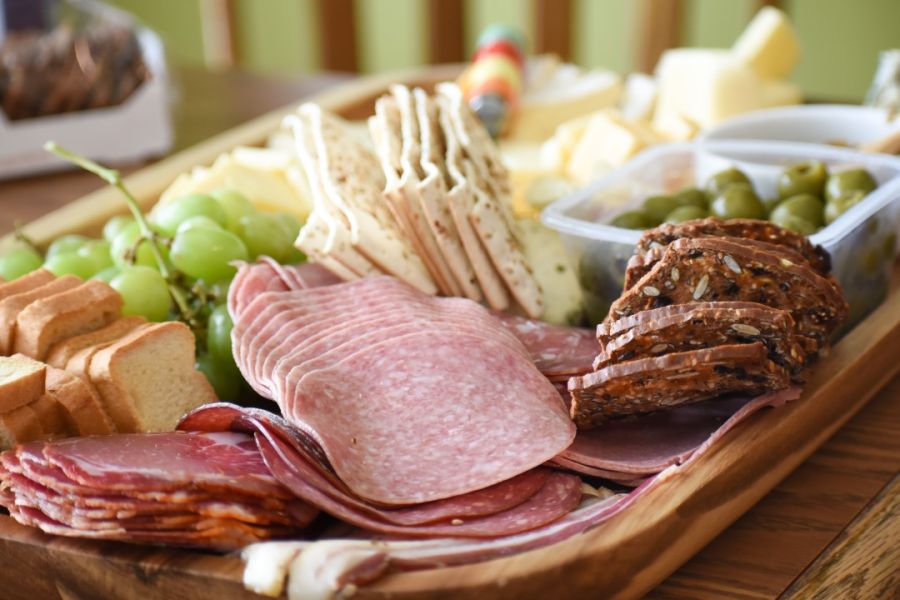
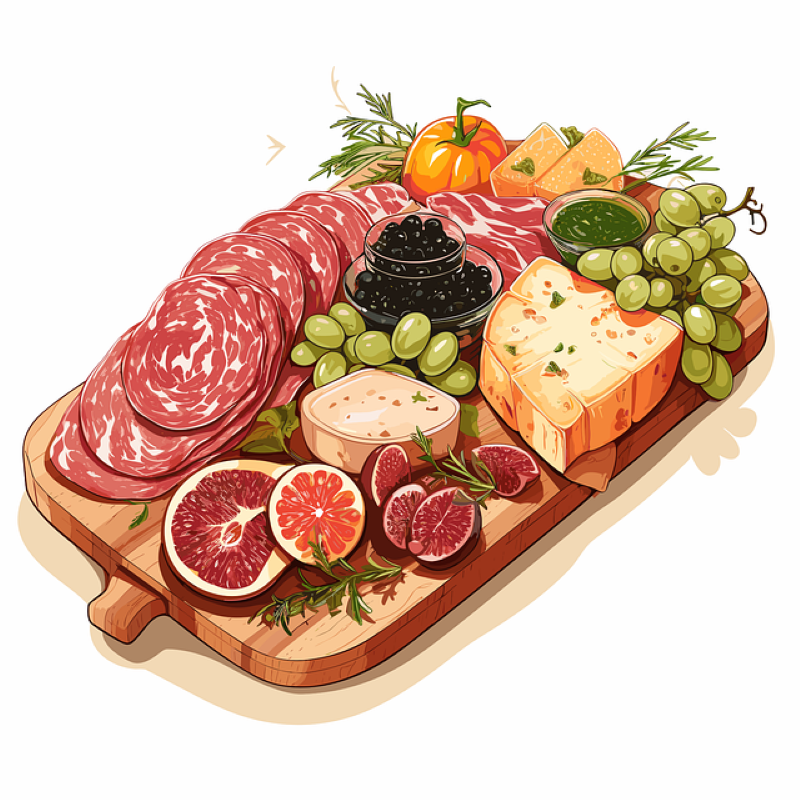


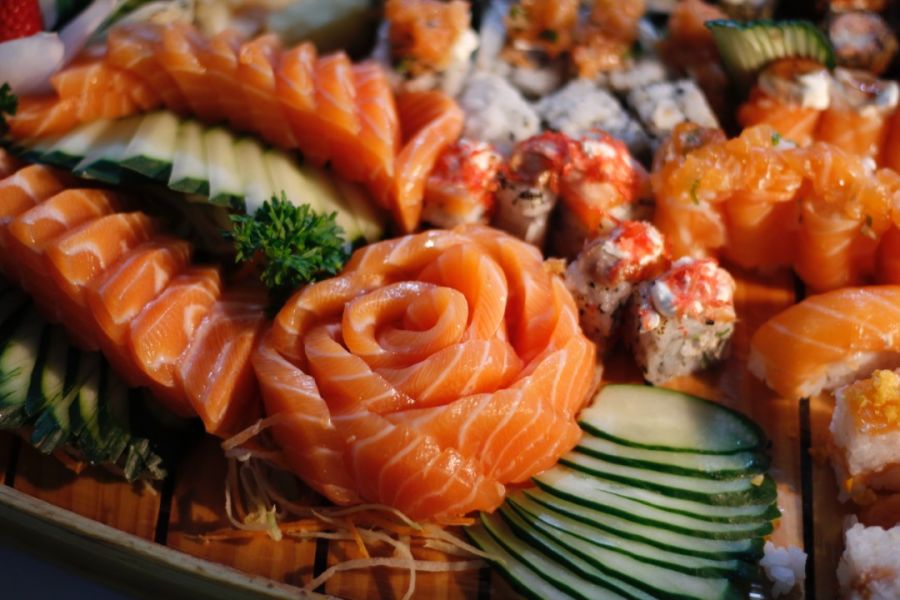
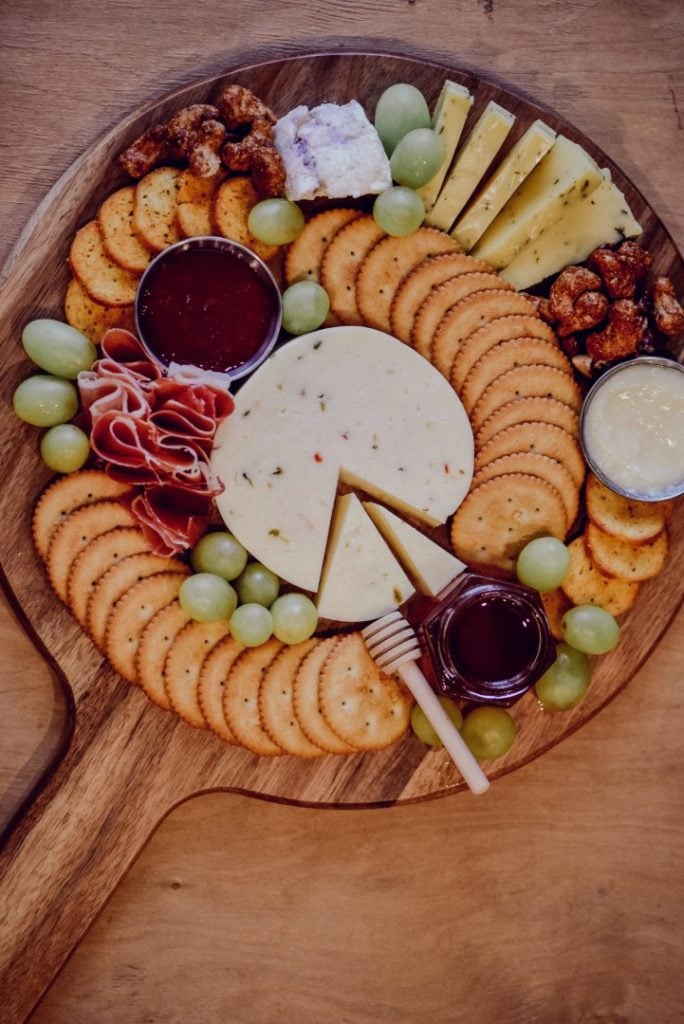
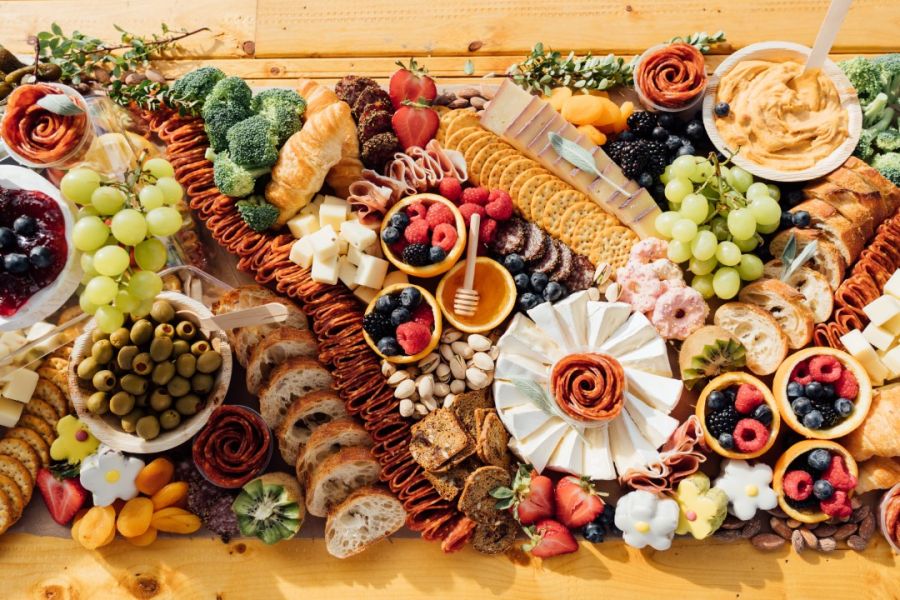
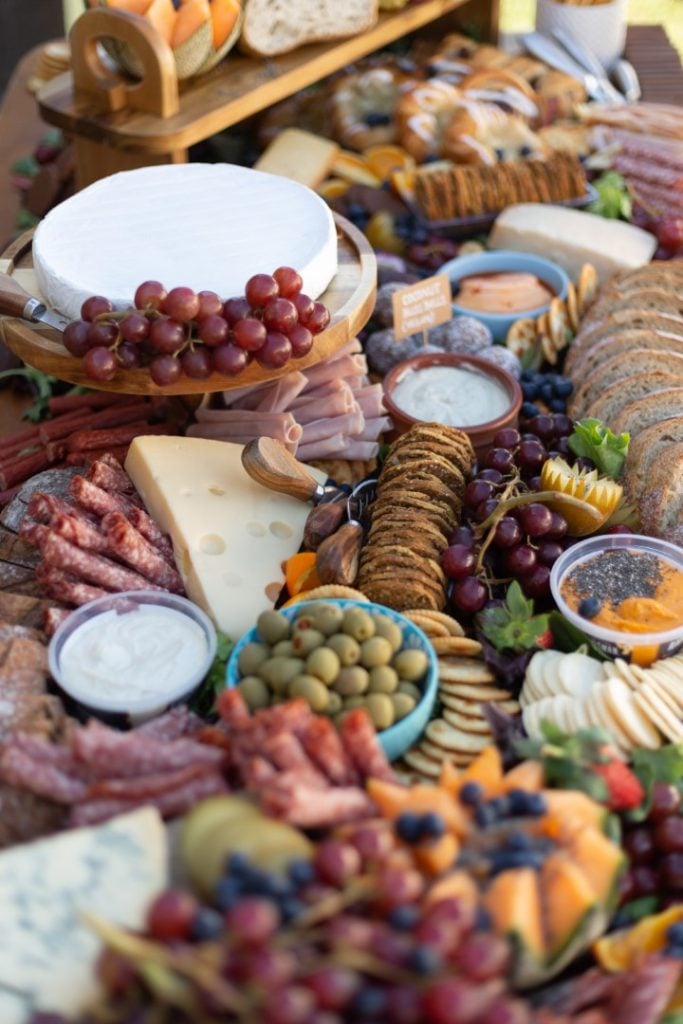
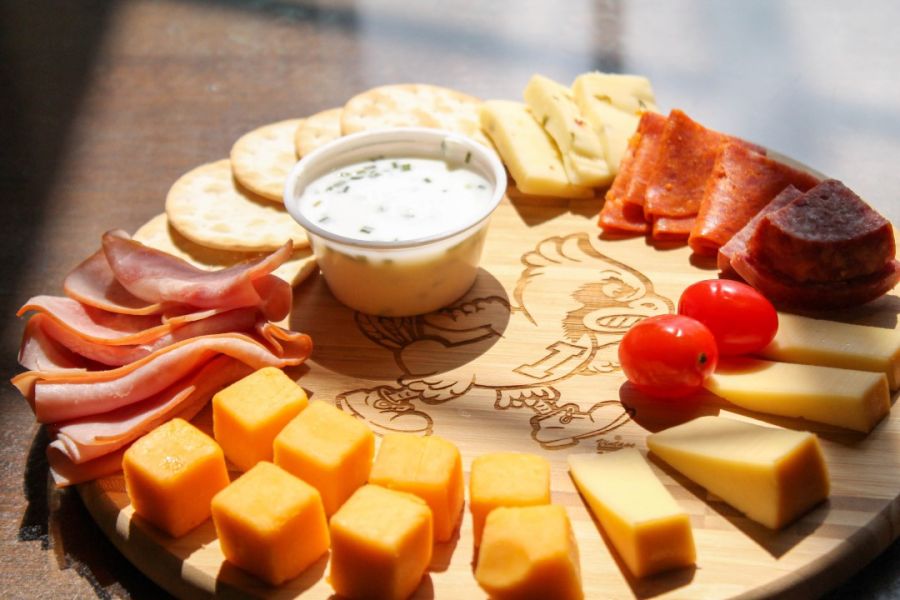


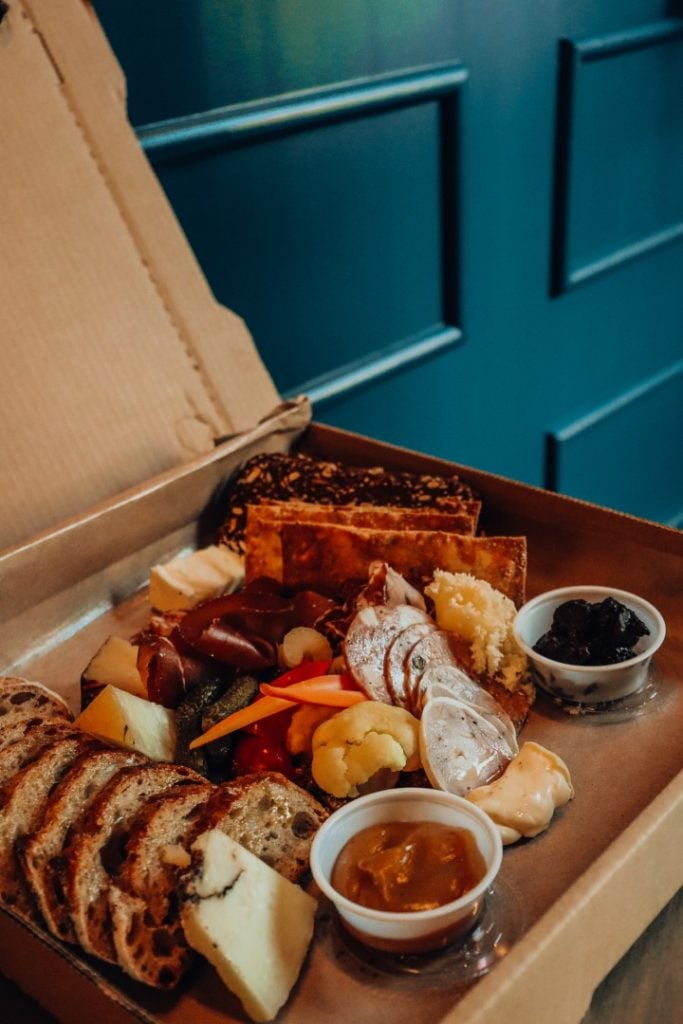
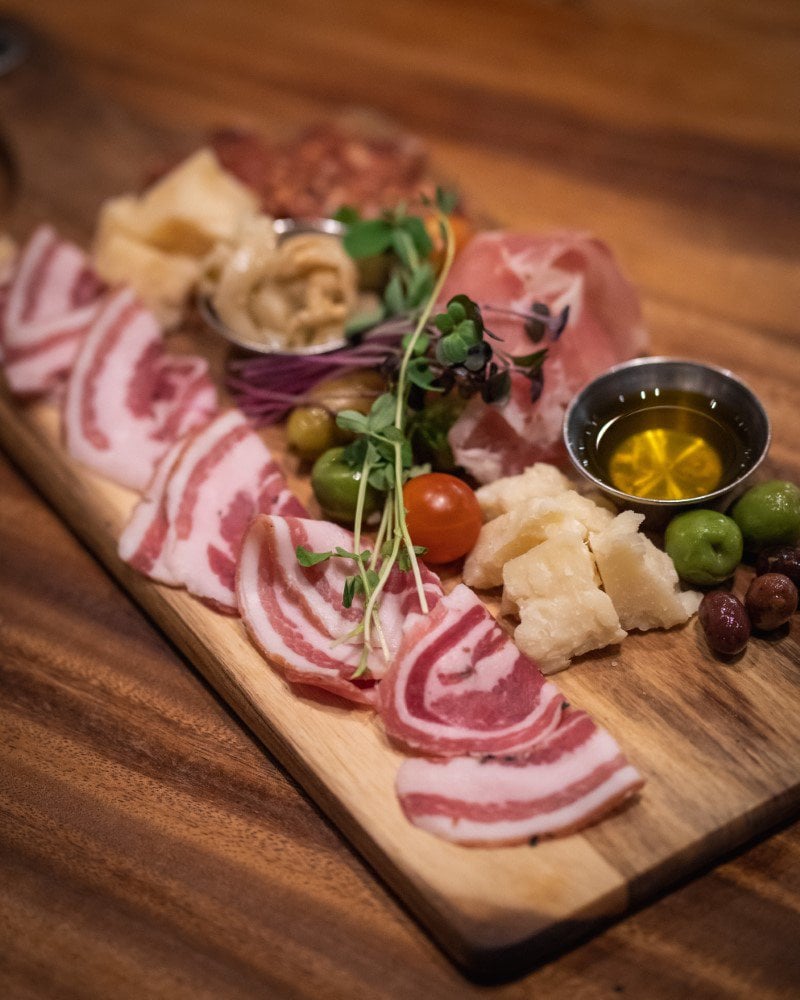
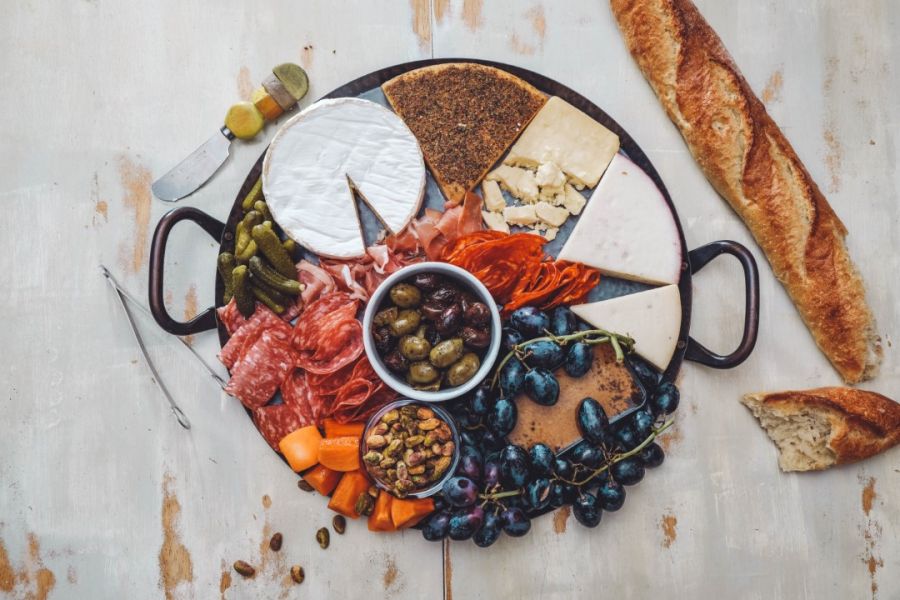
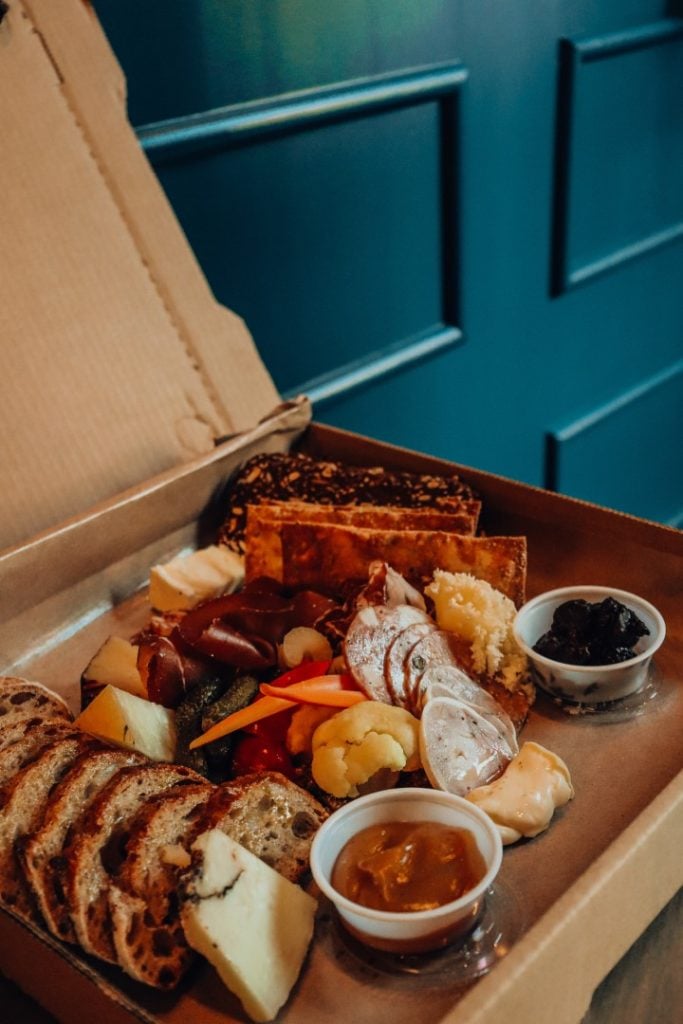
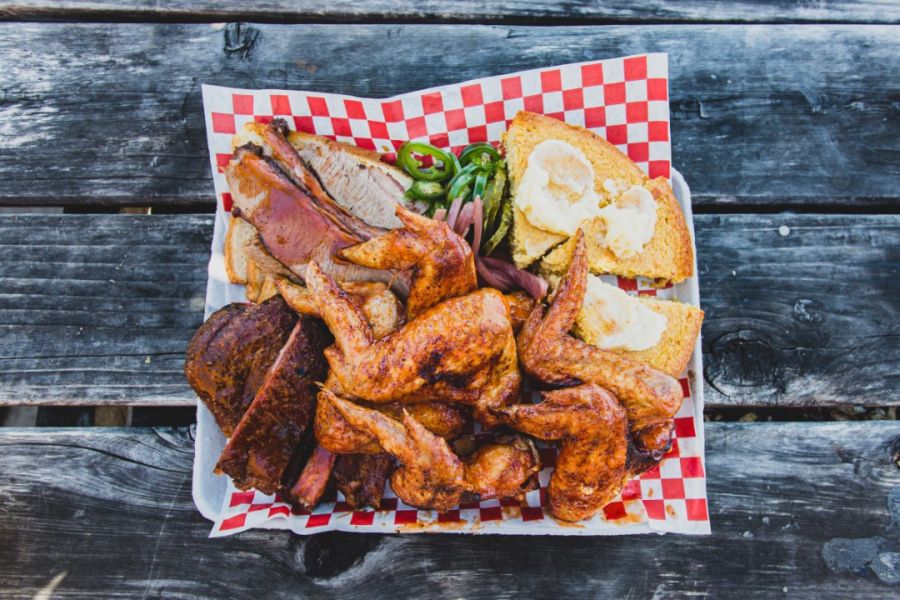
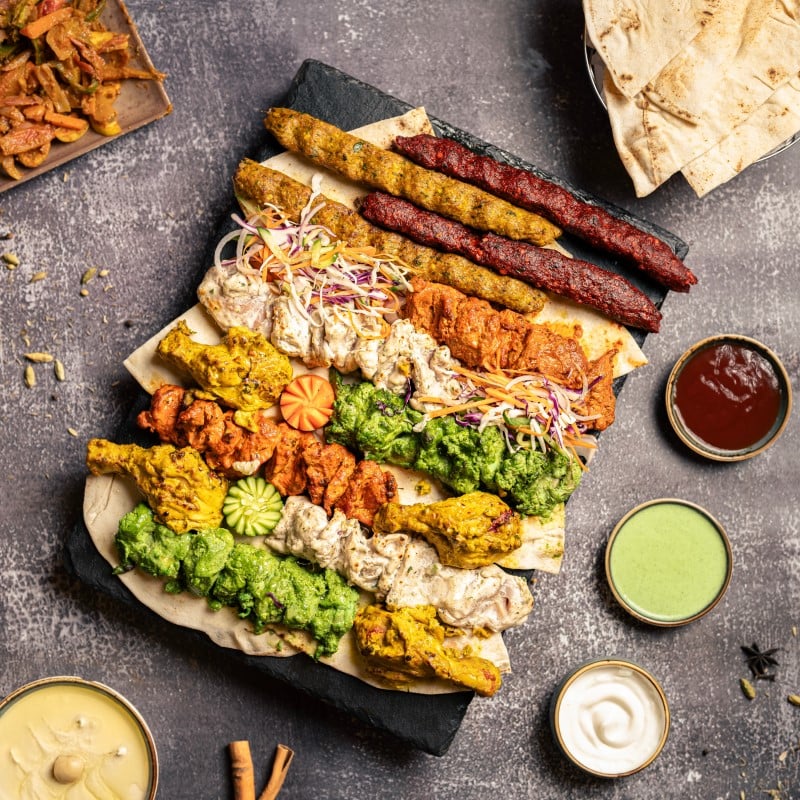
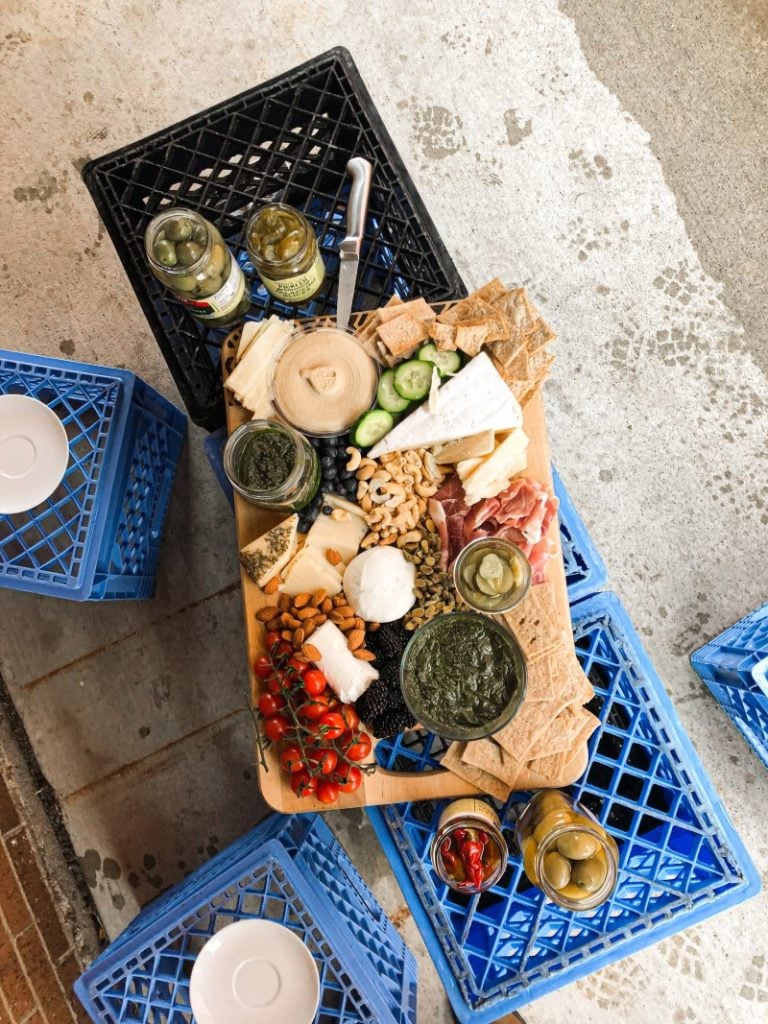
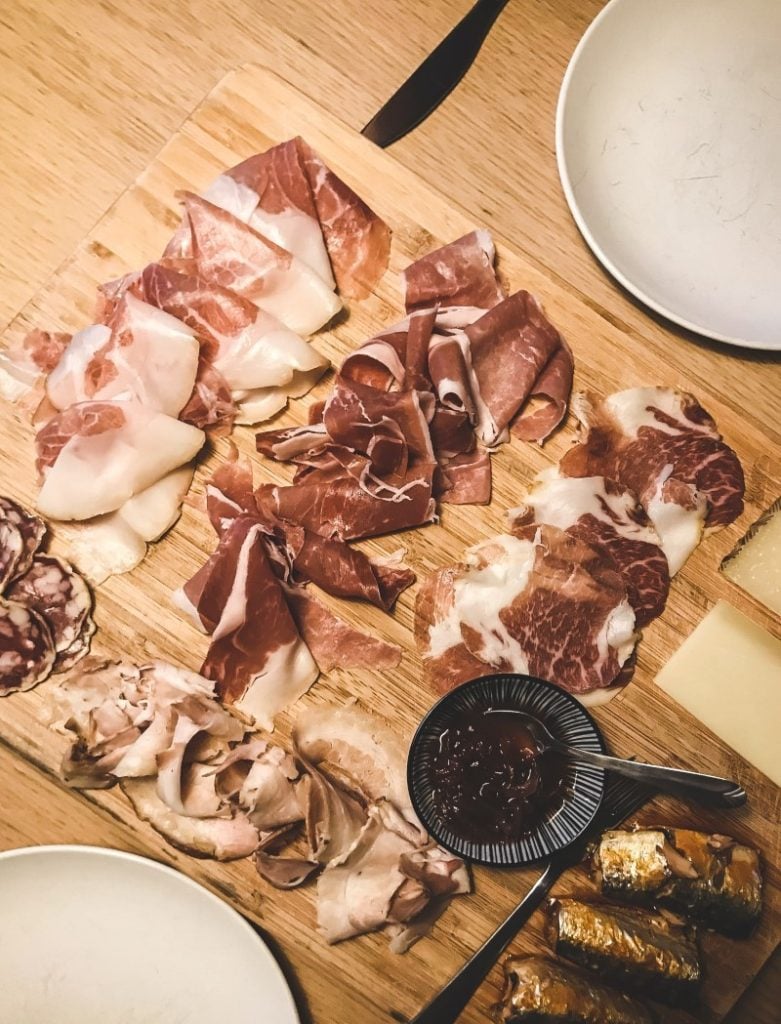
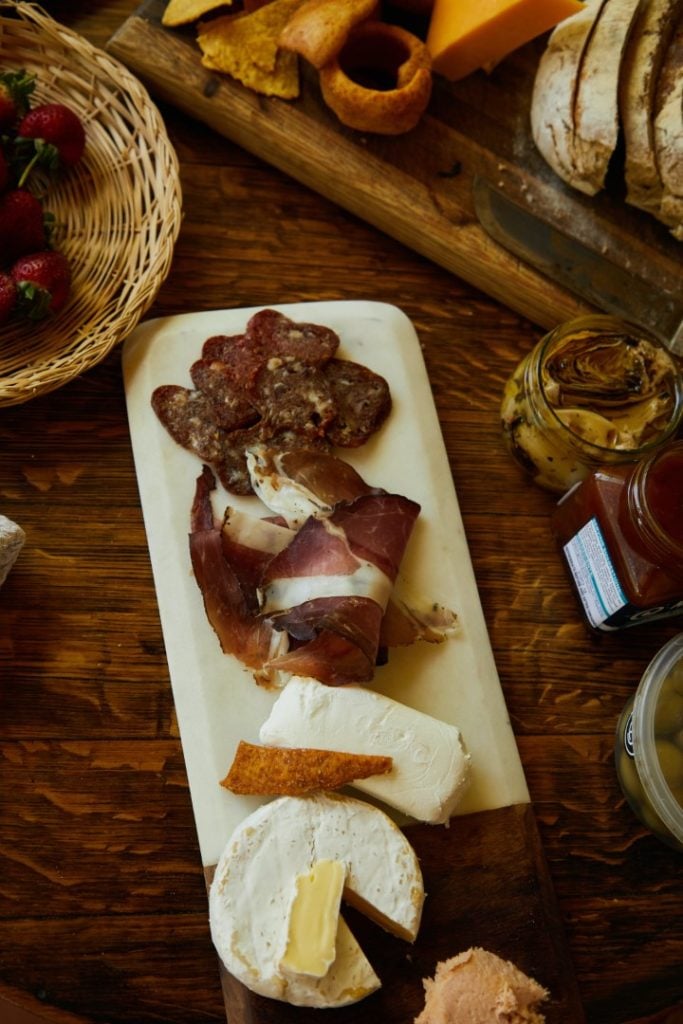
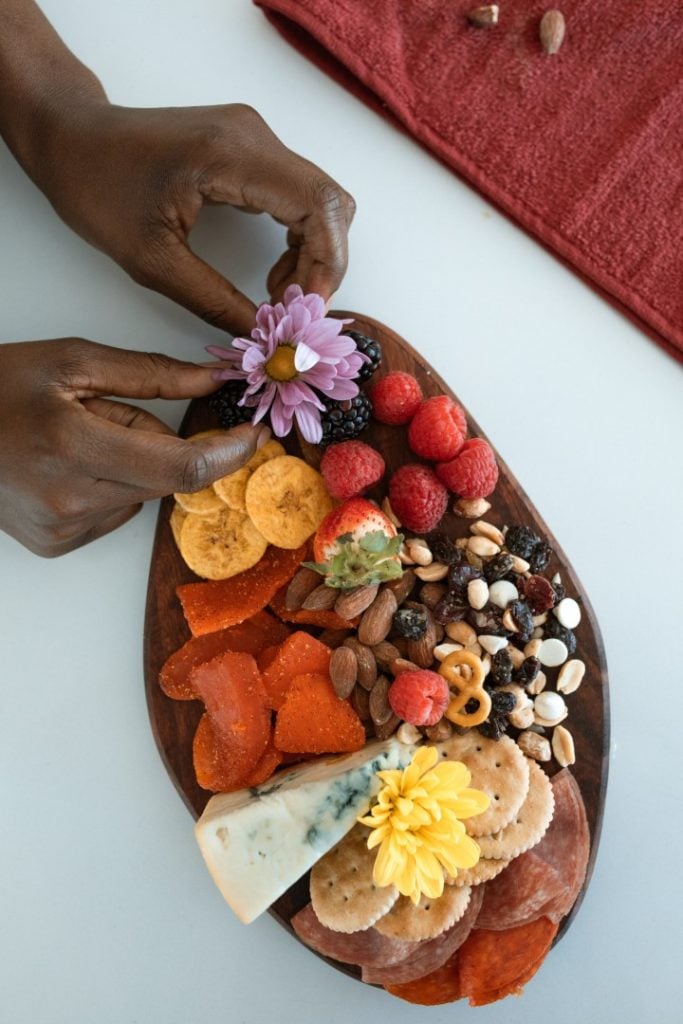
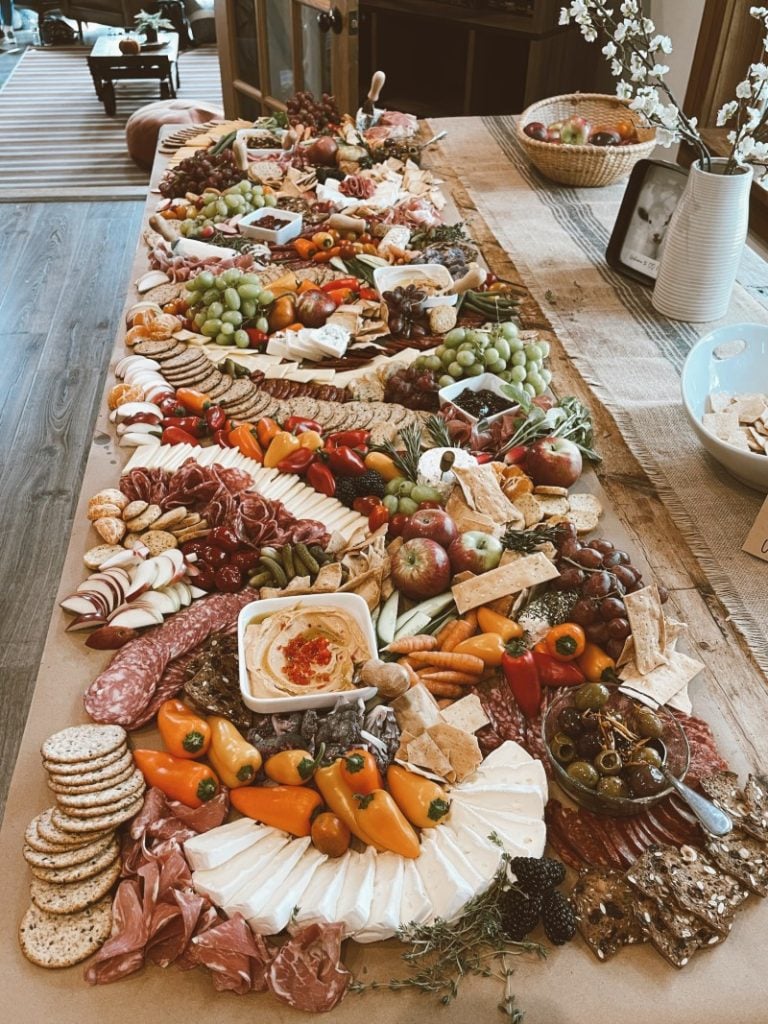
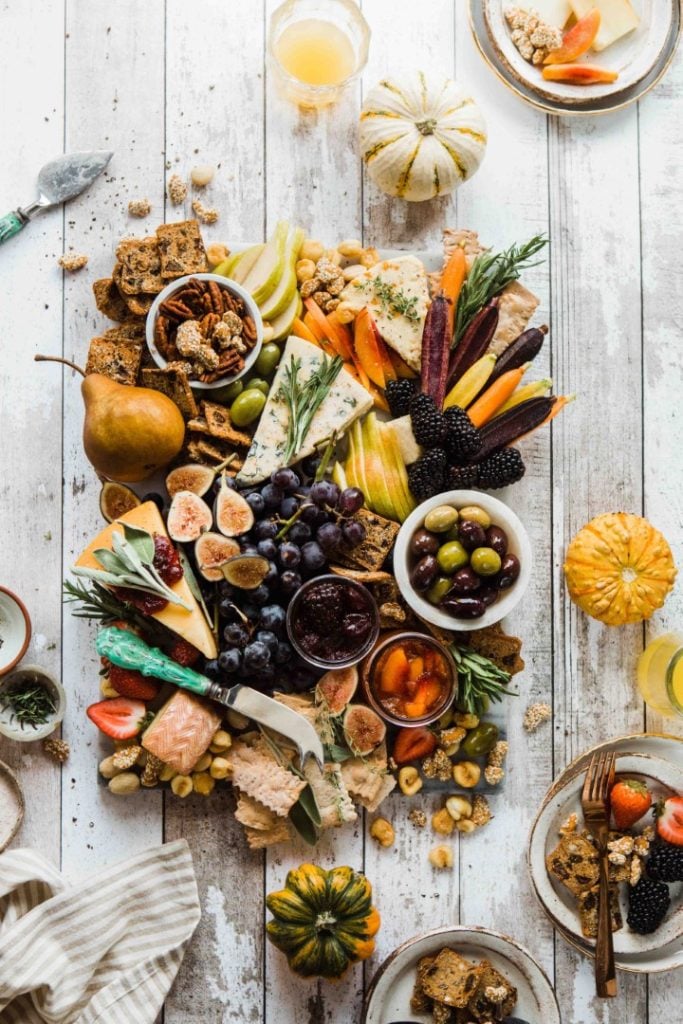
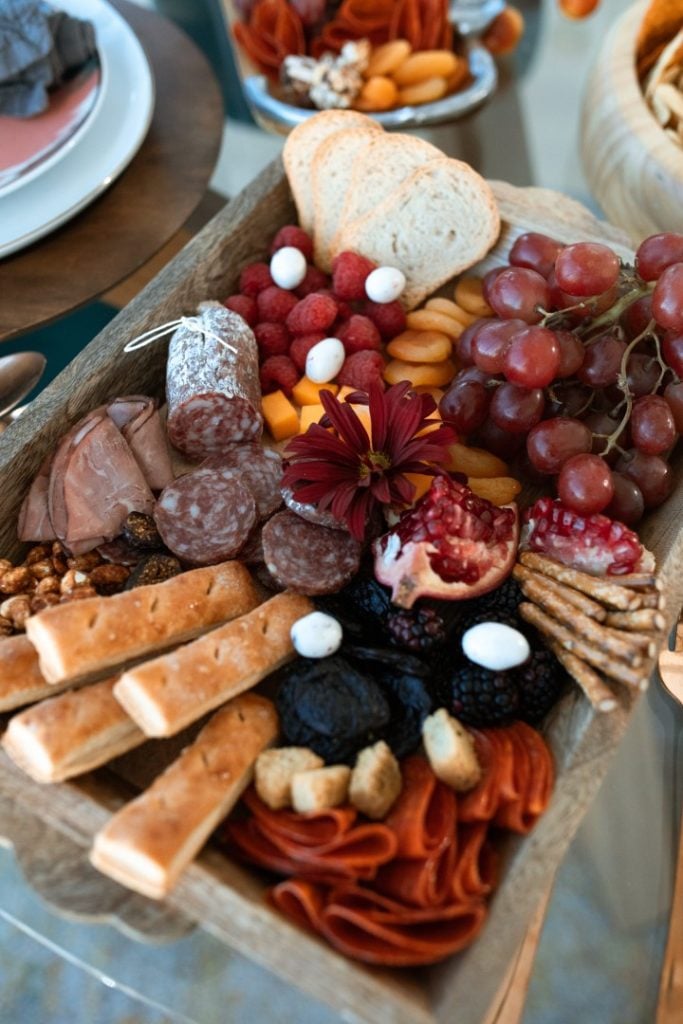

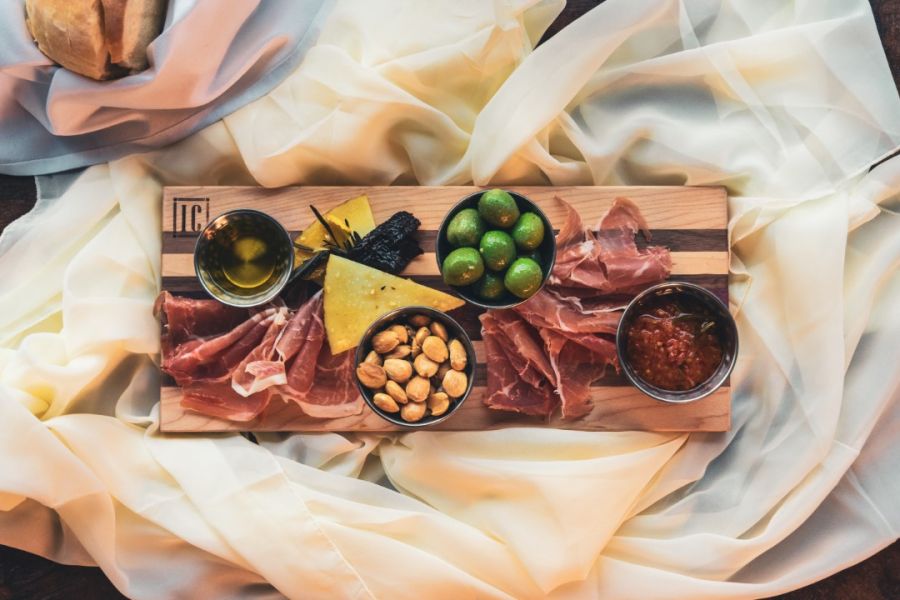
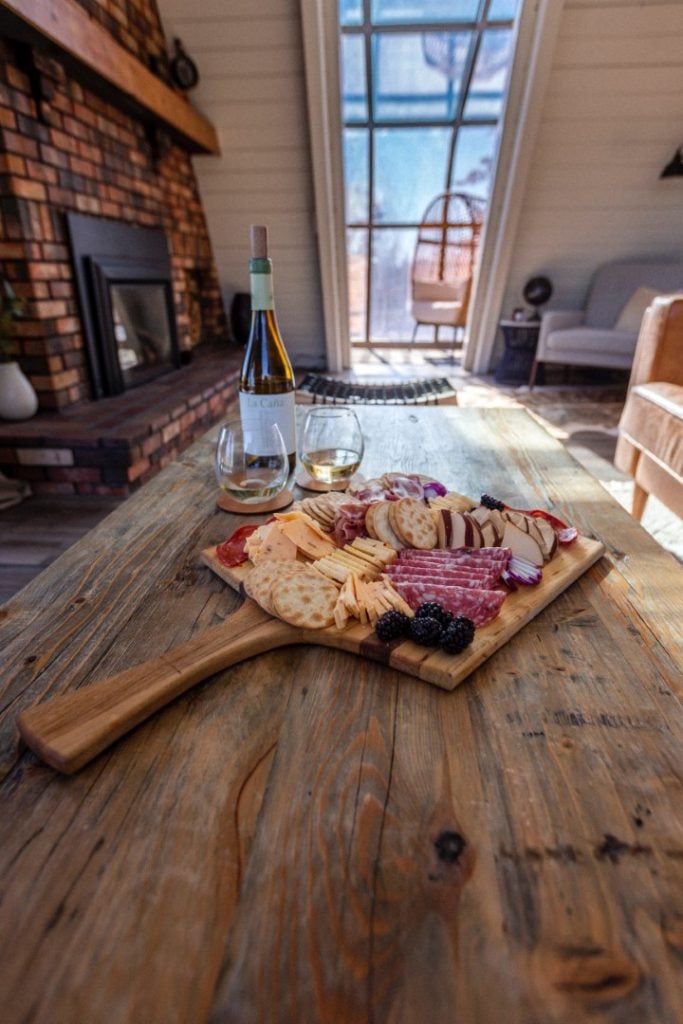
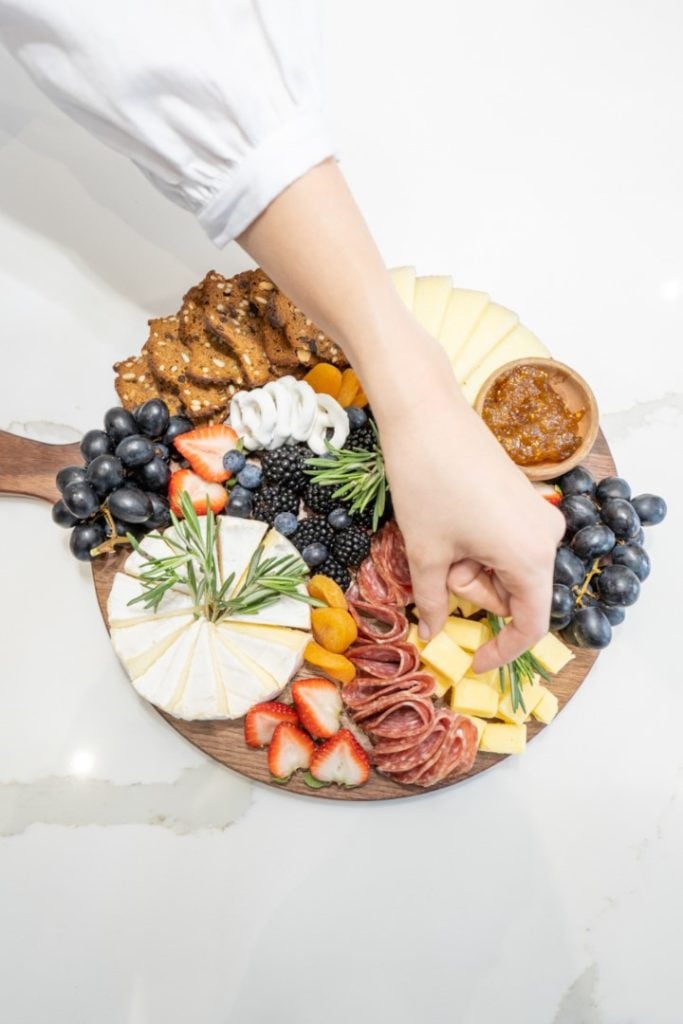
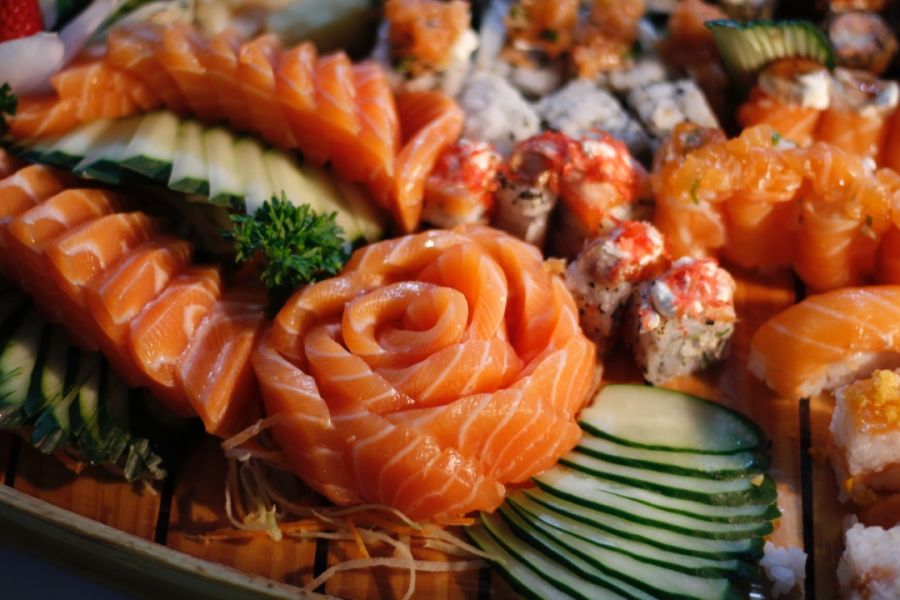
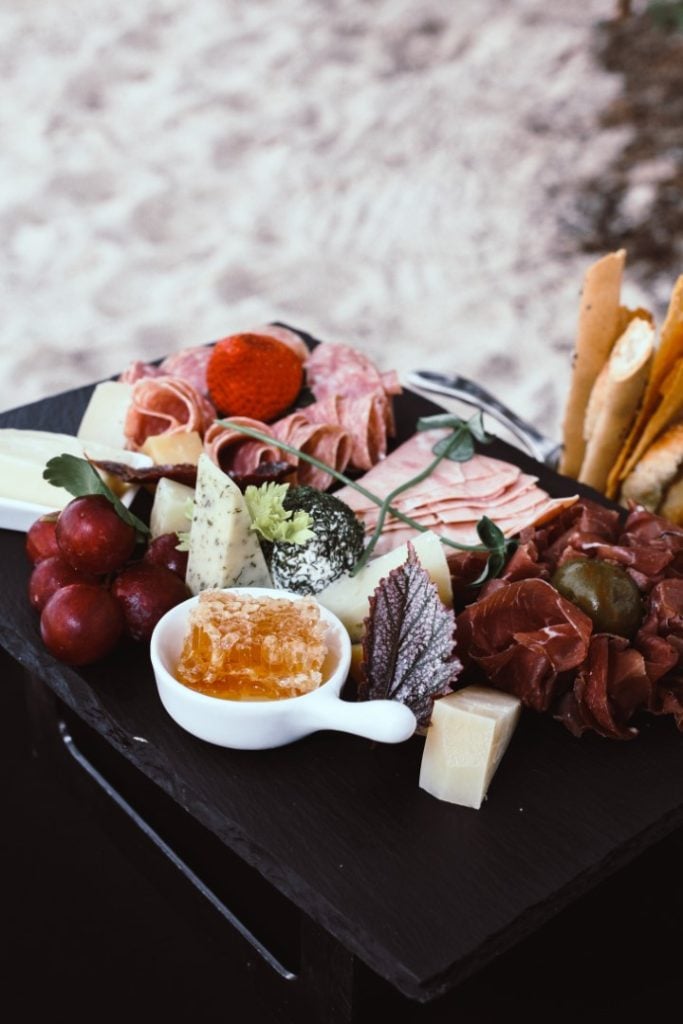
Thank you very much for the information, I’ve learned about spreads and can’t wait to try some of these out.
Thanks, condiments are awesome! Cheers Tom